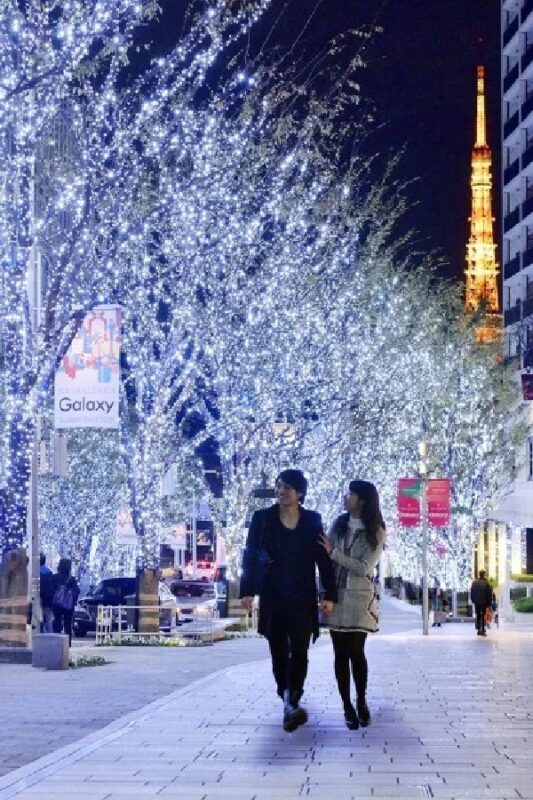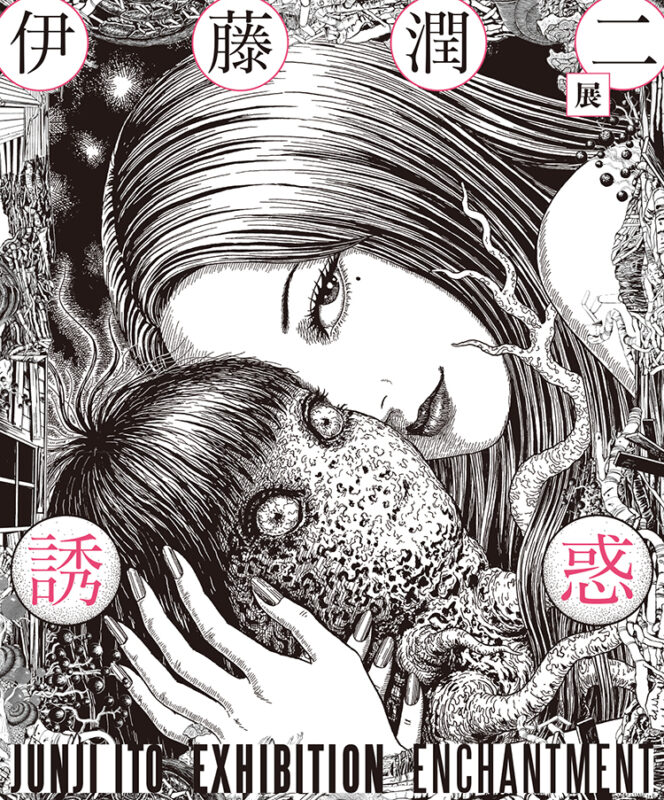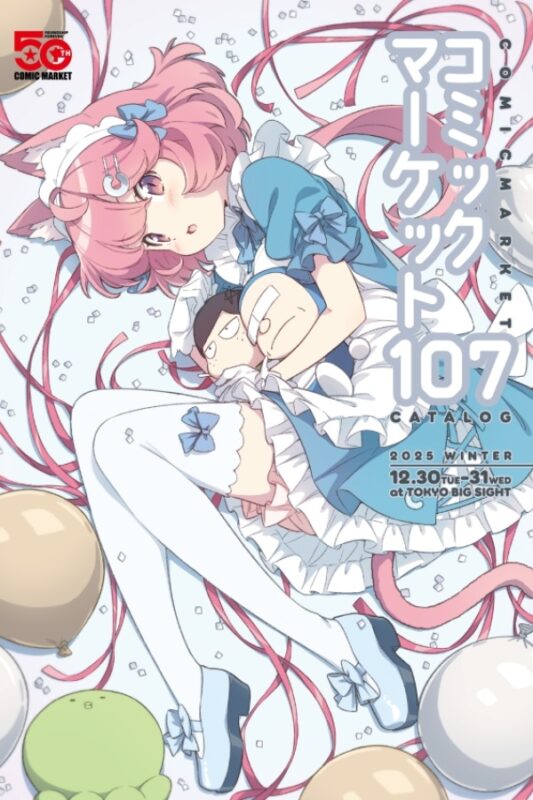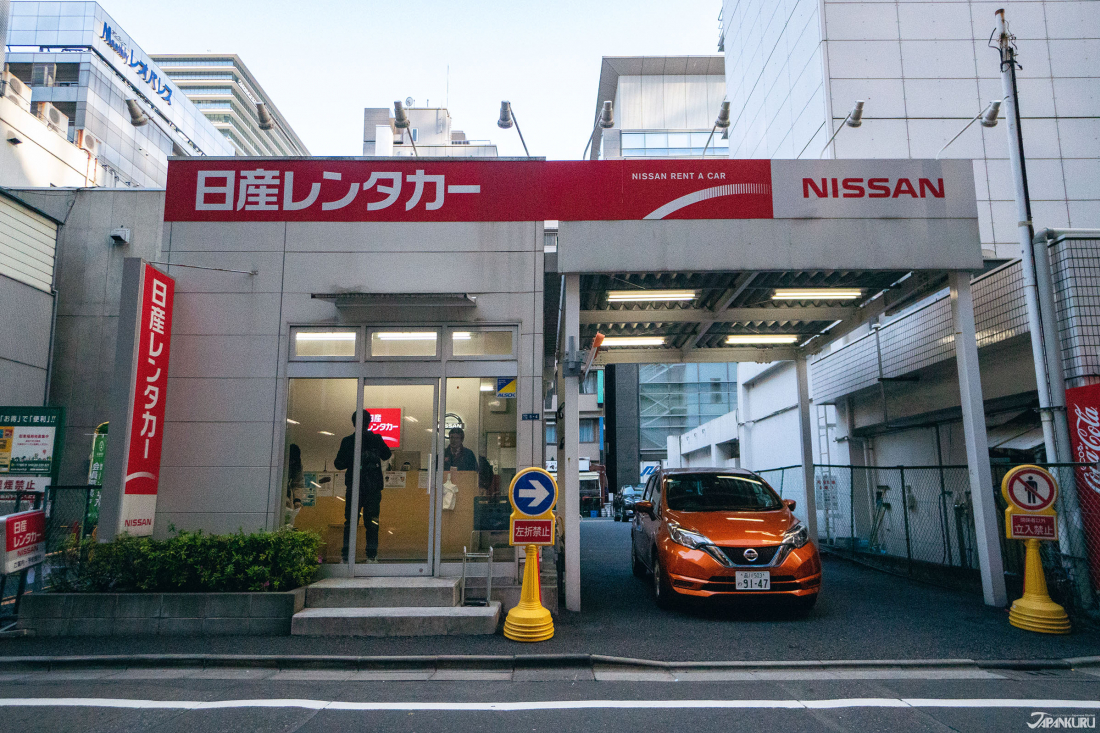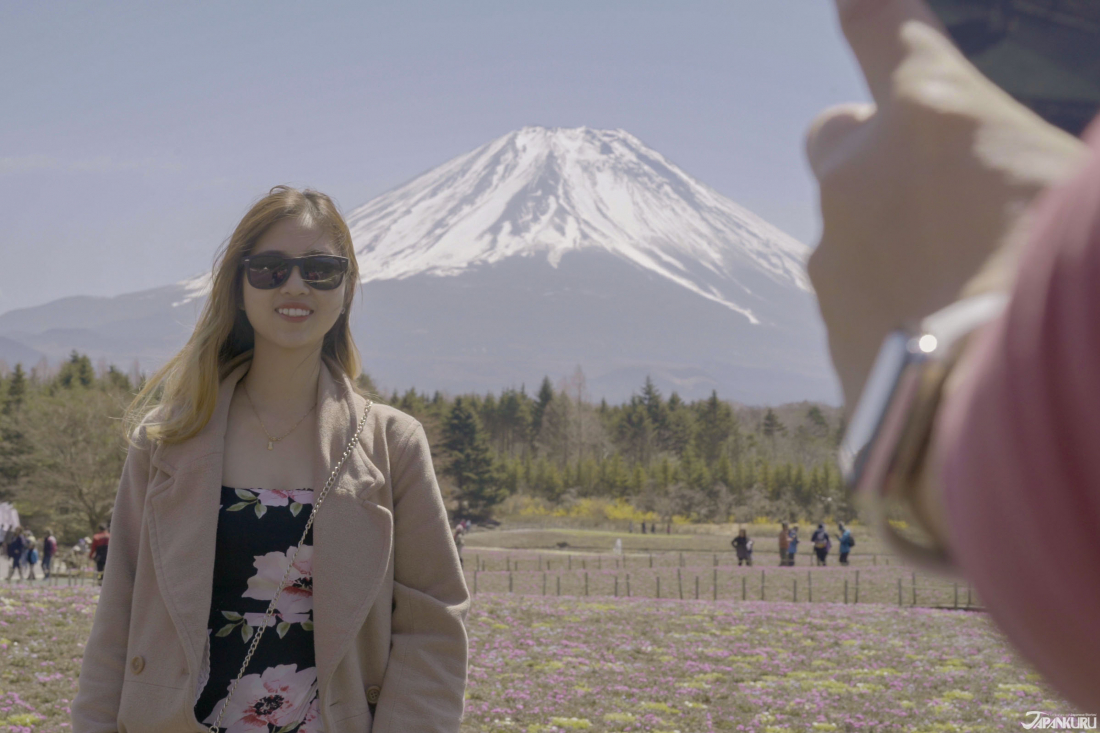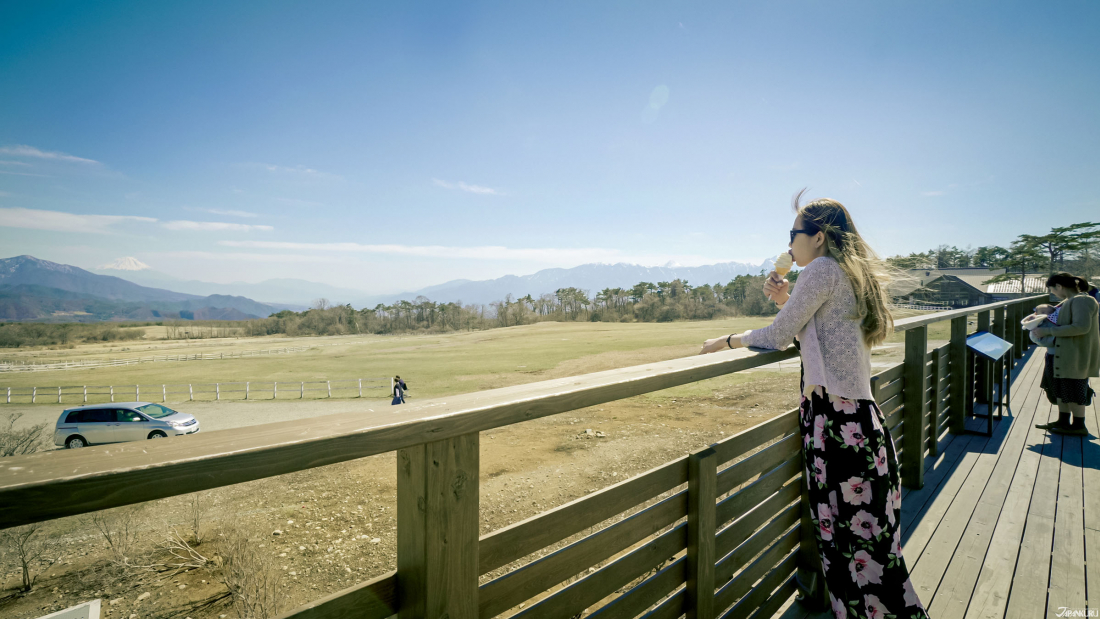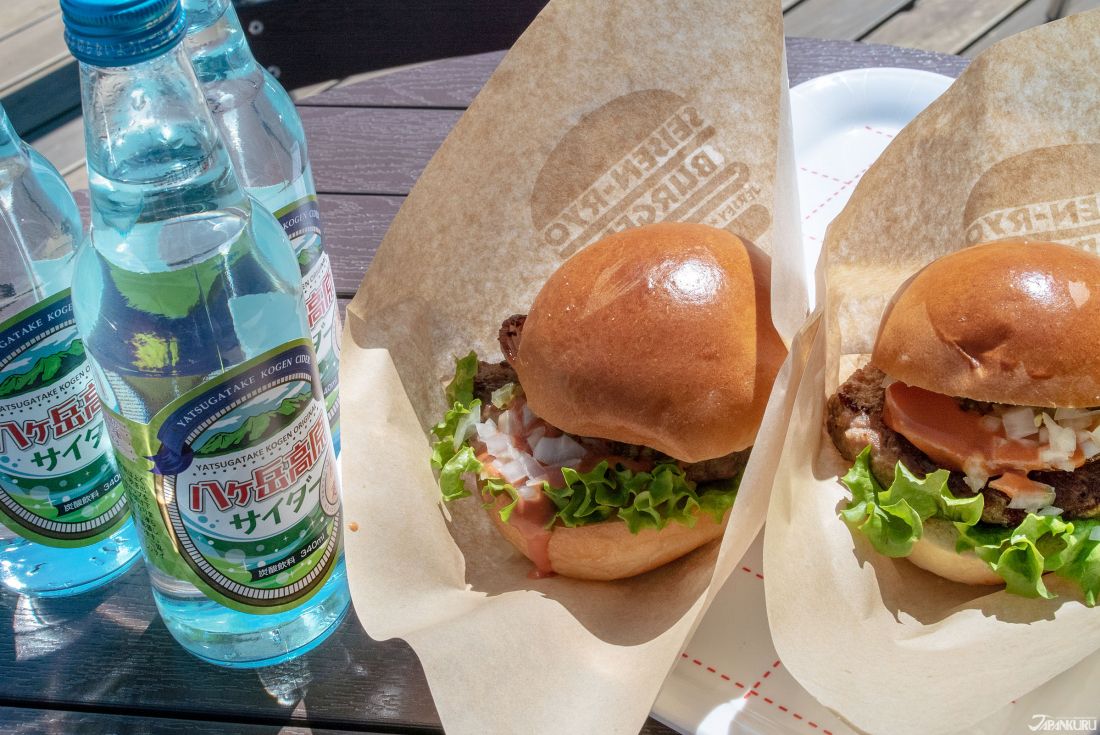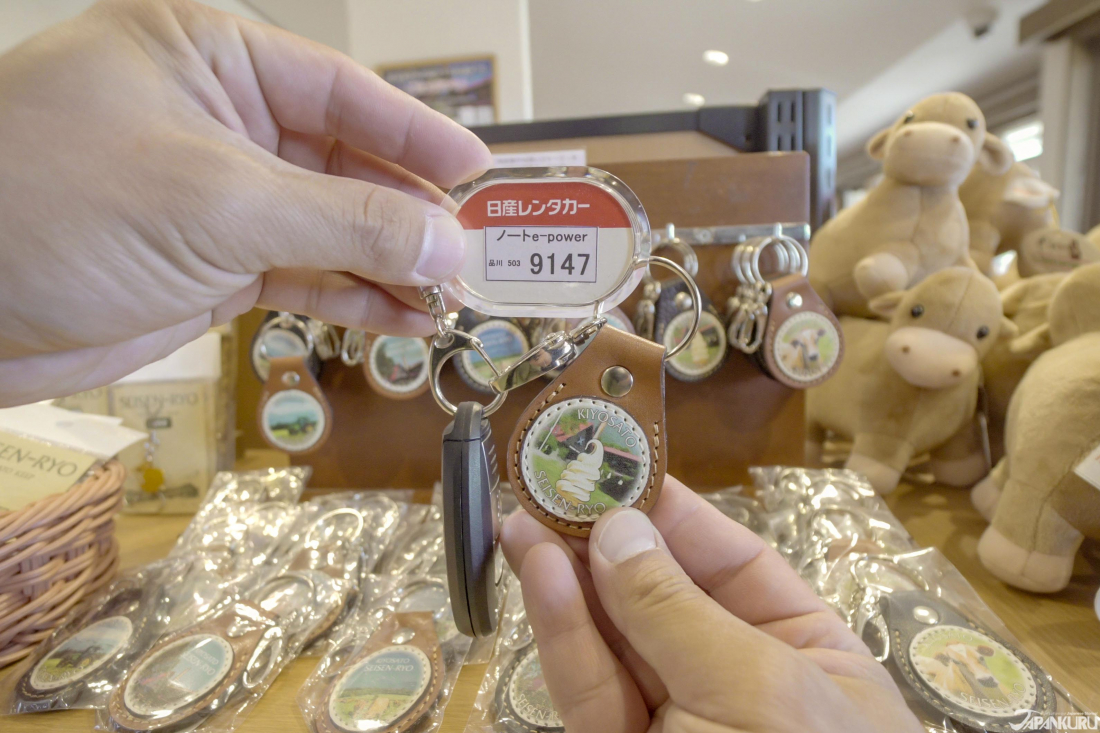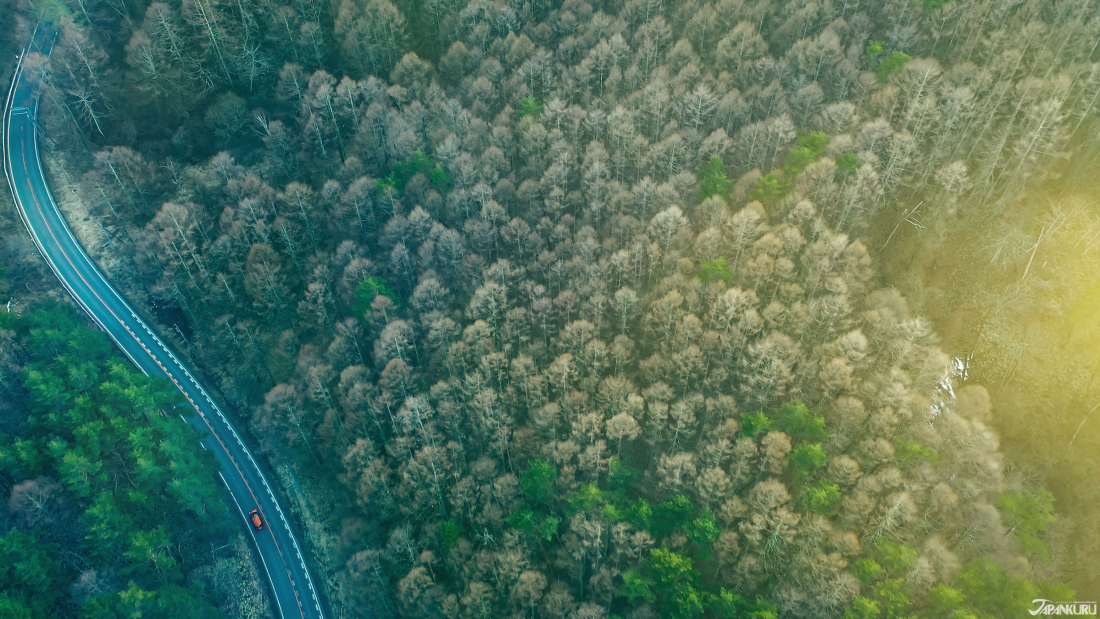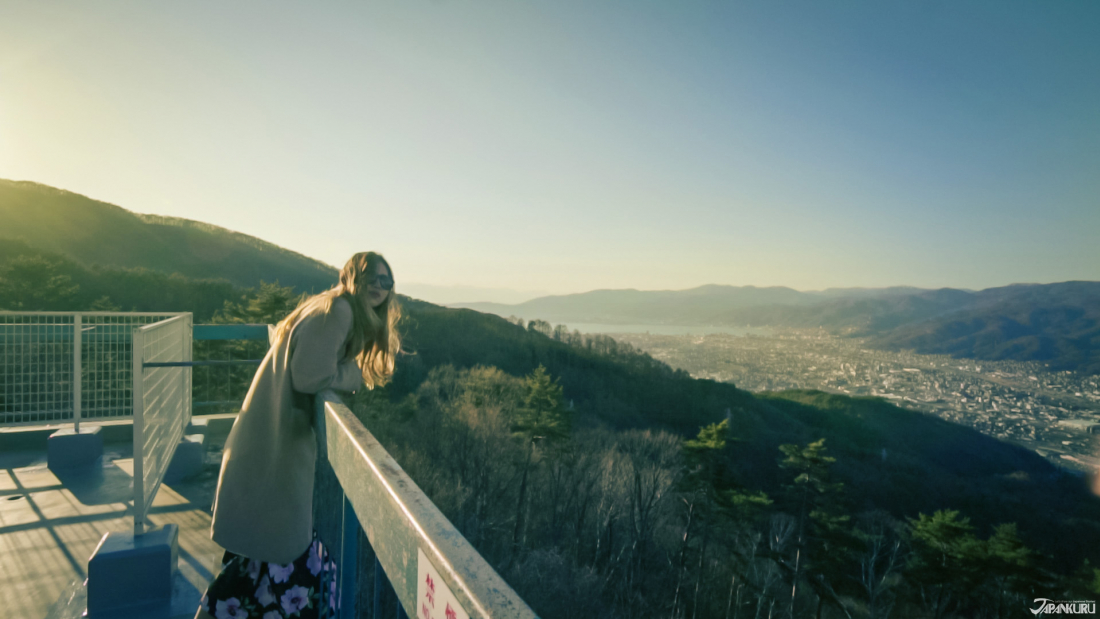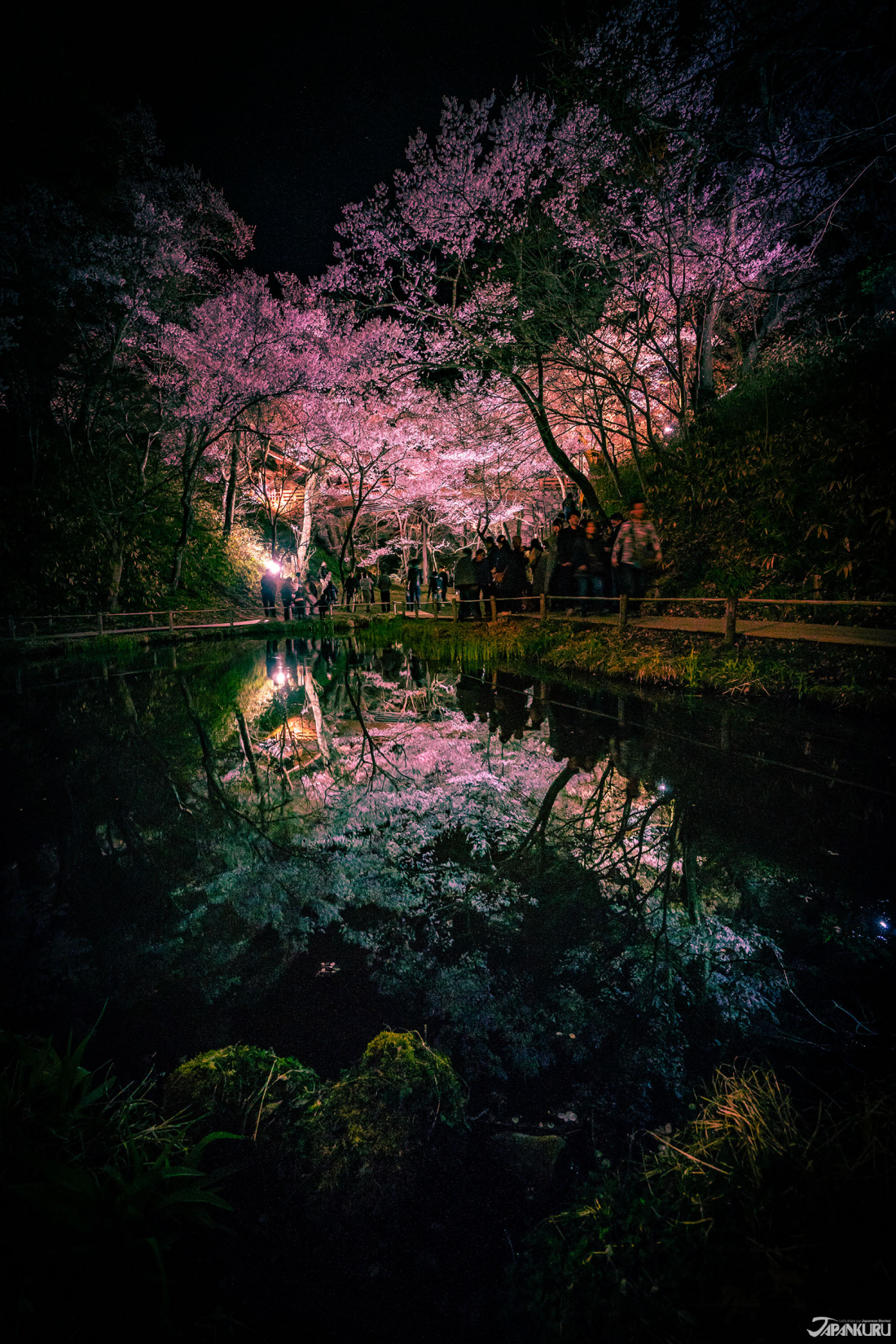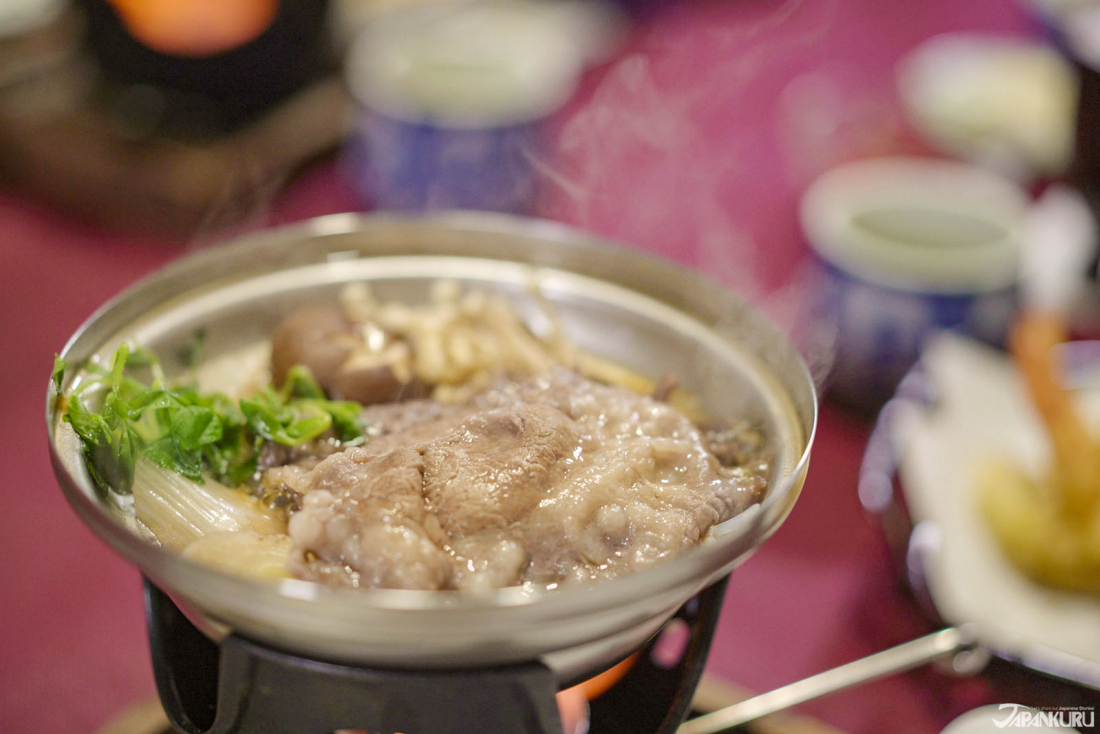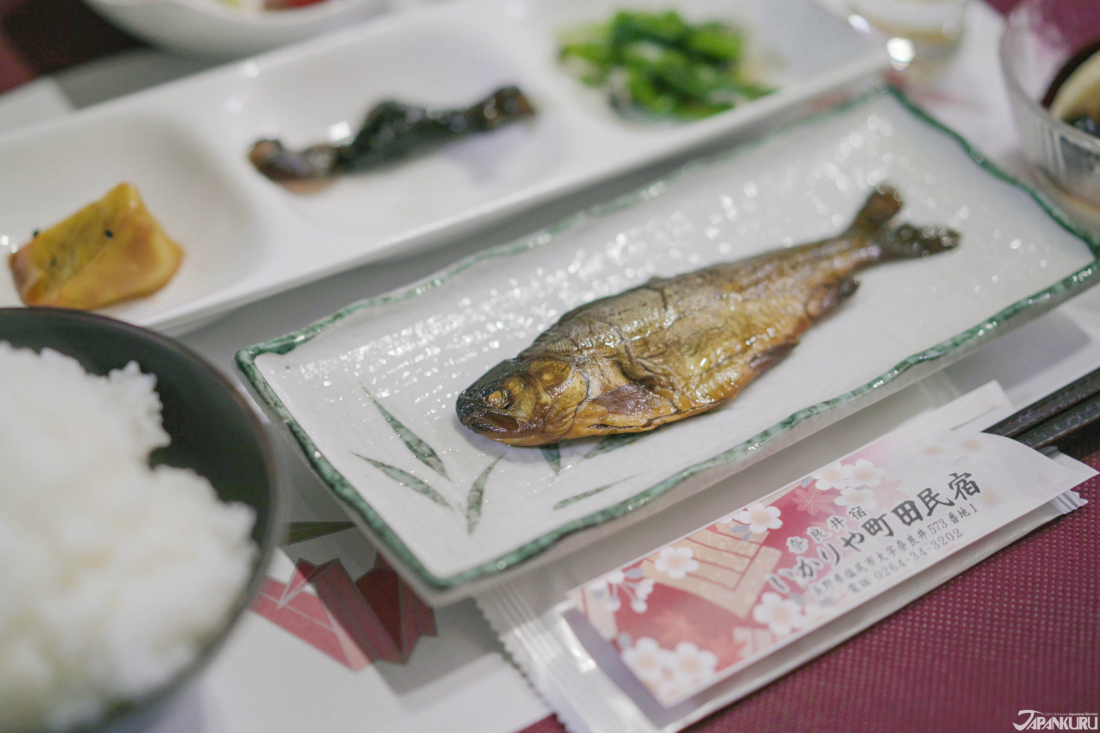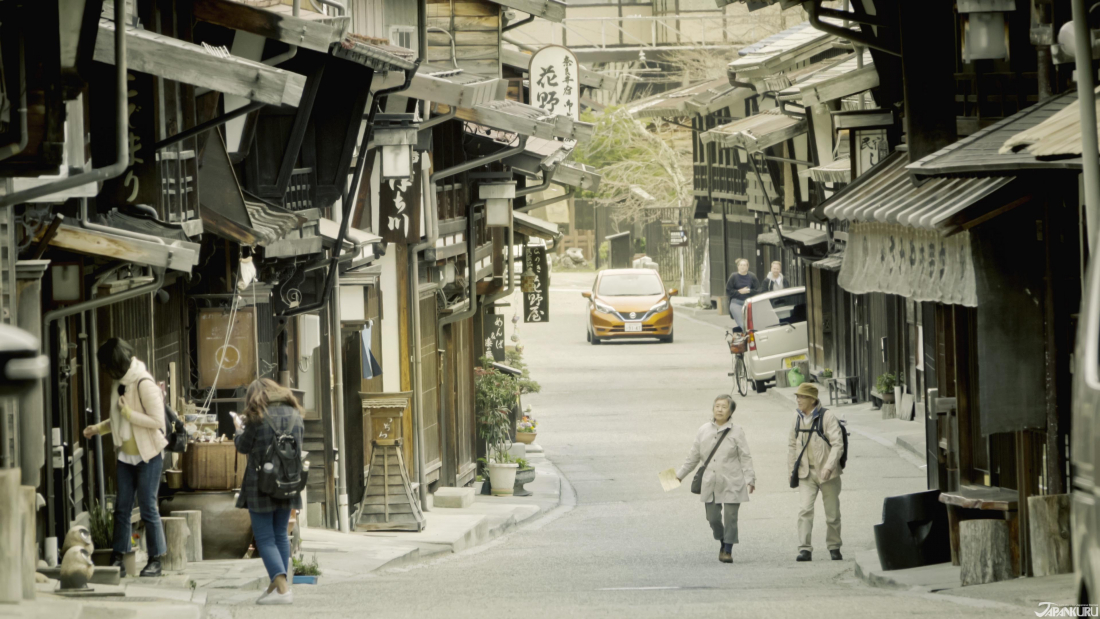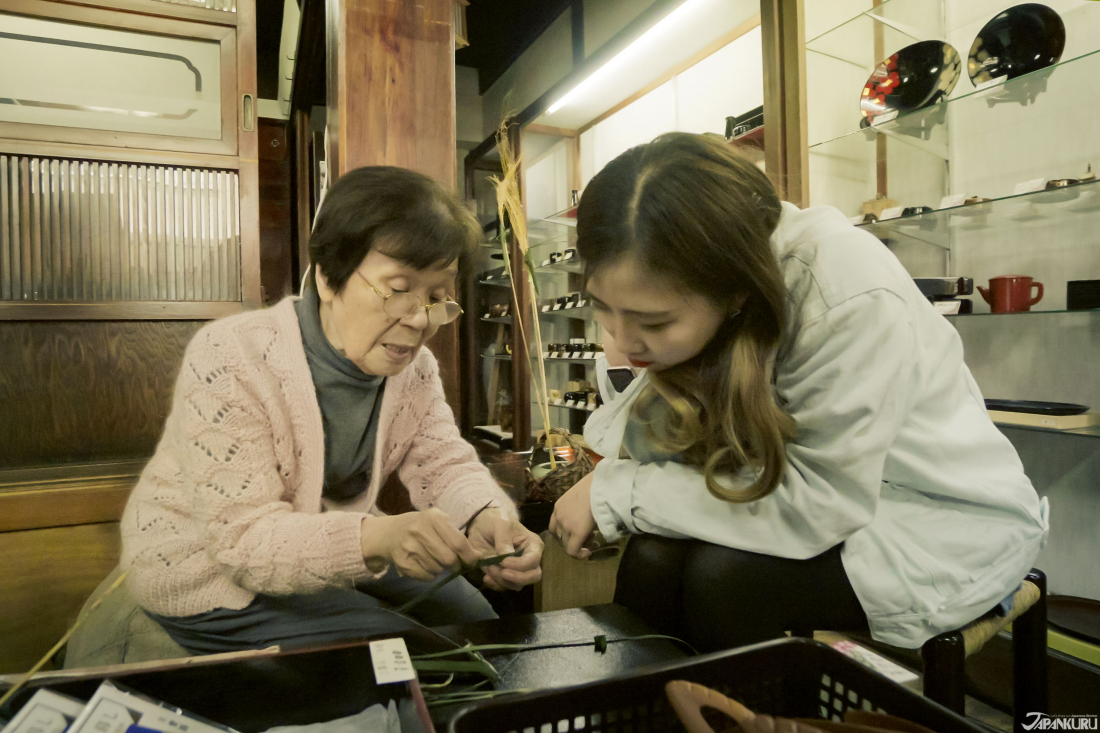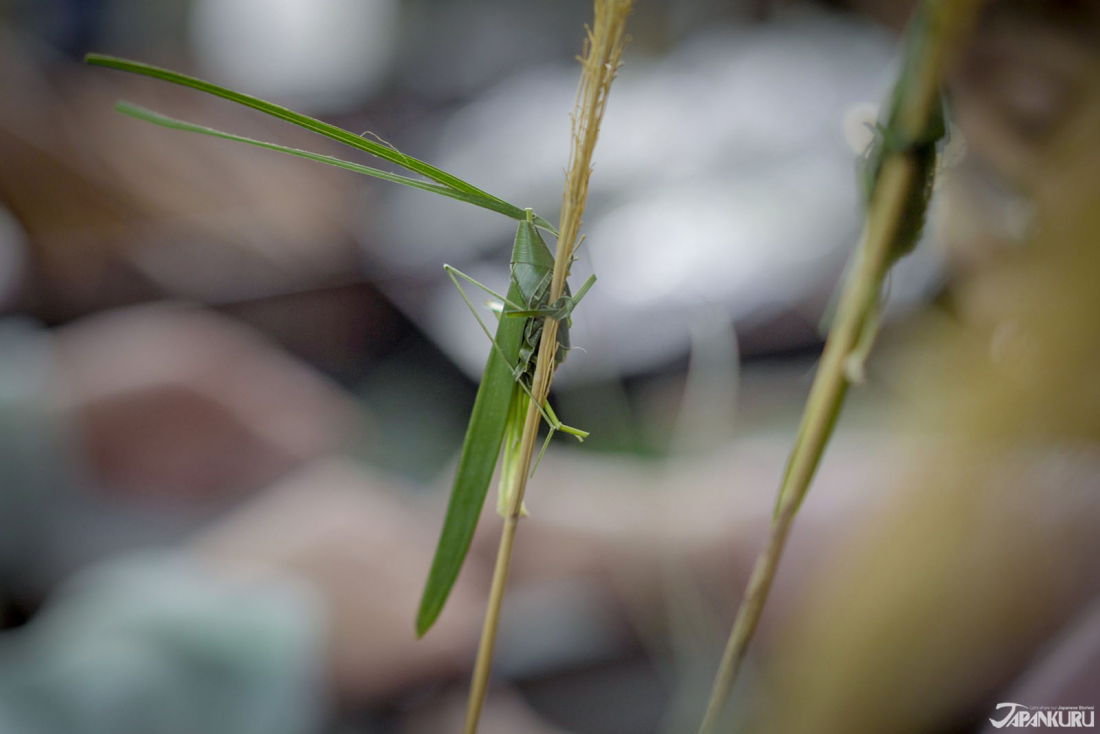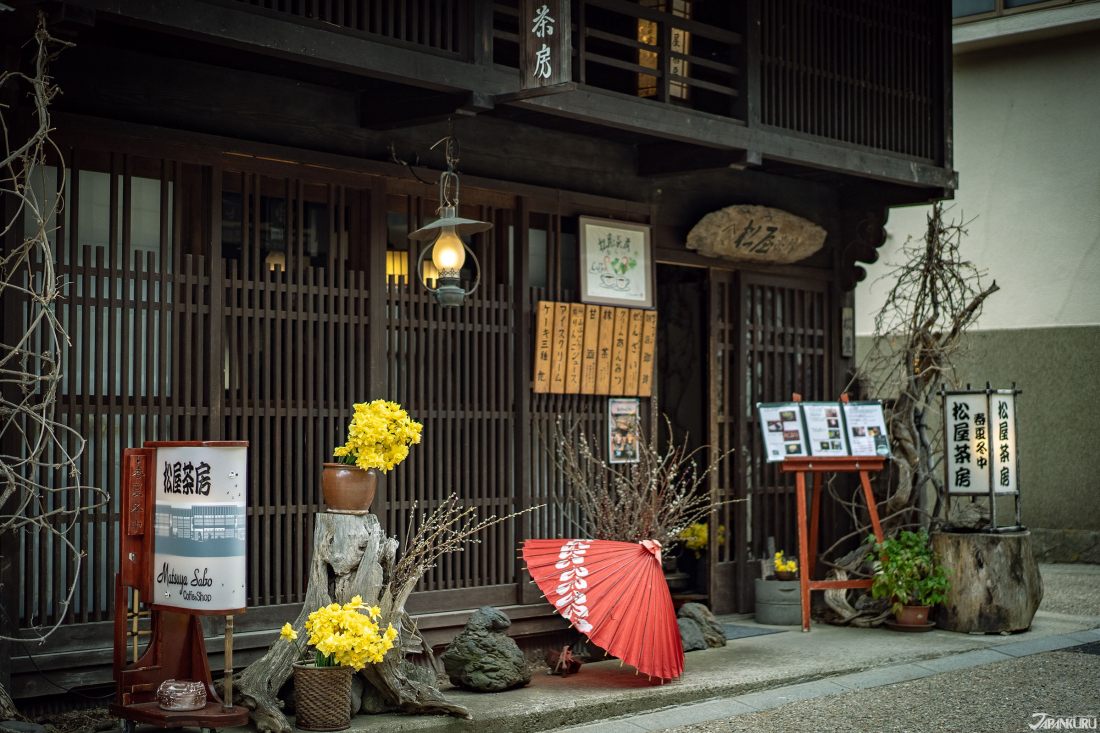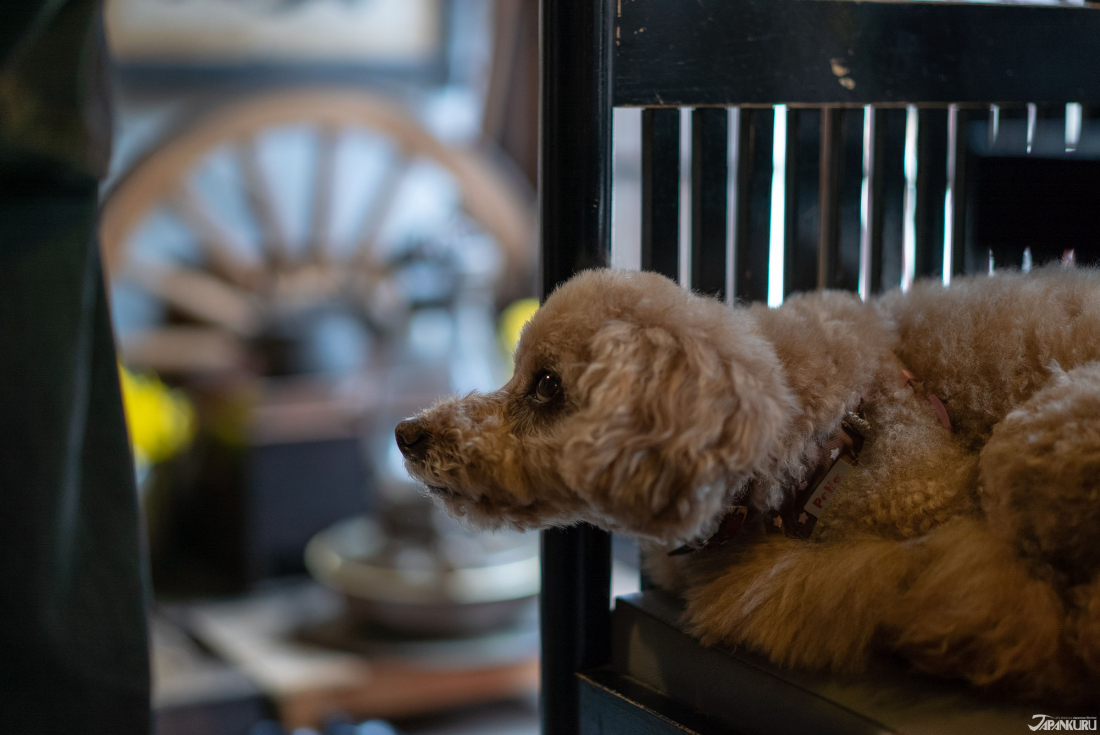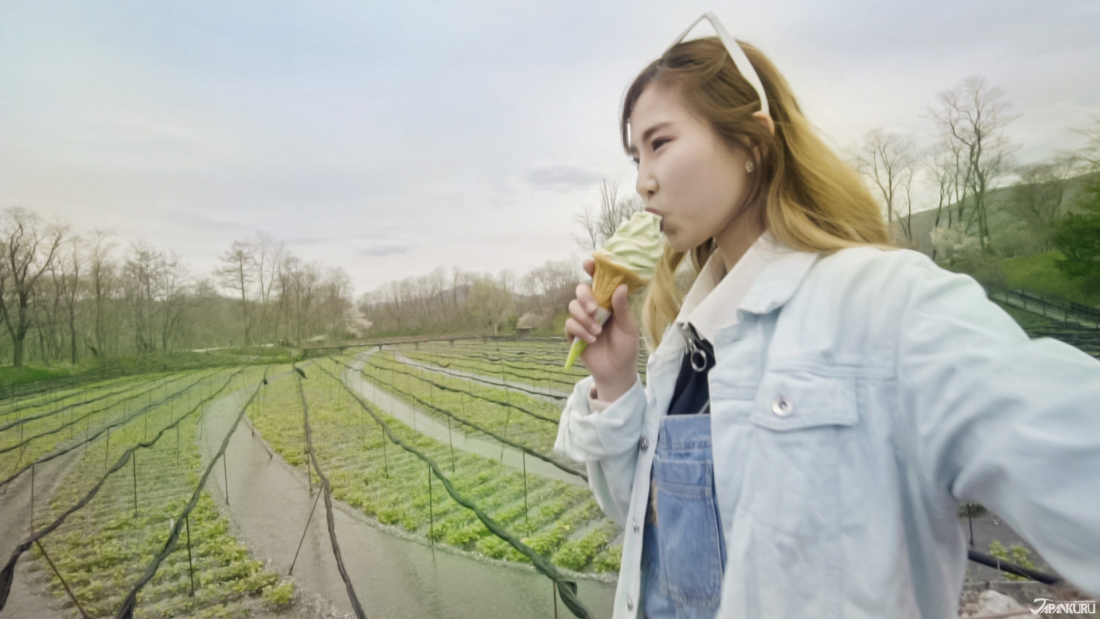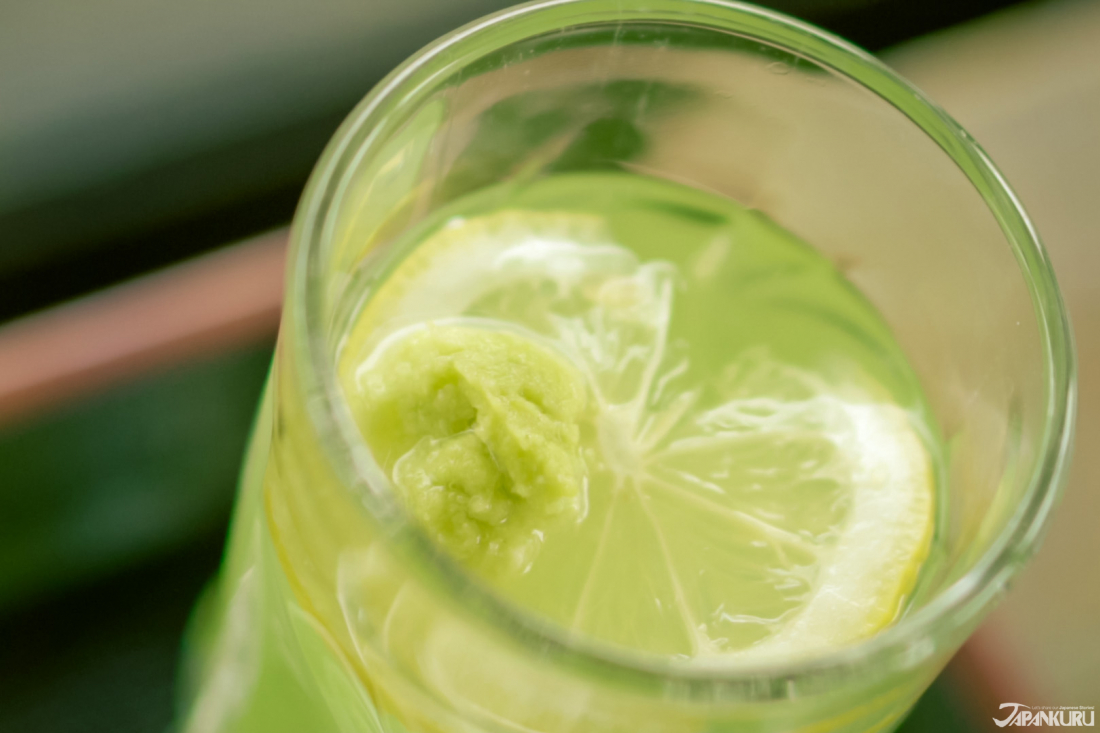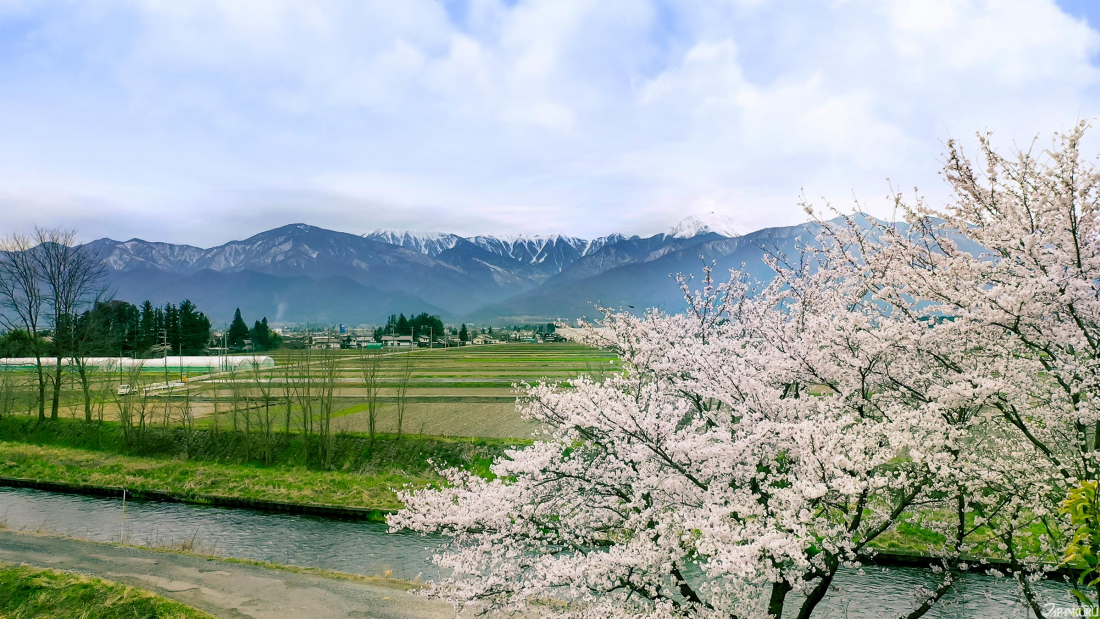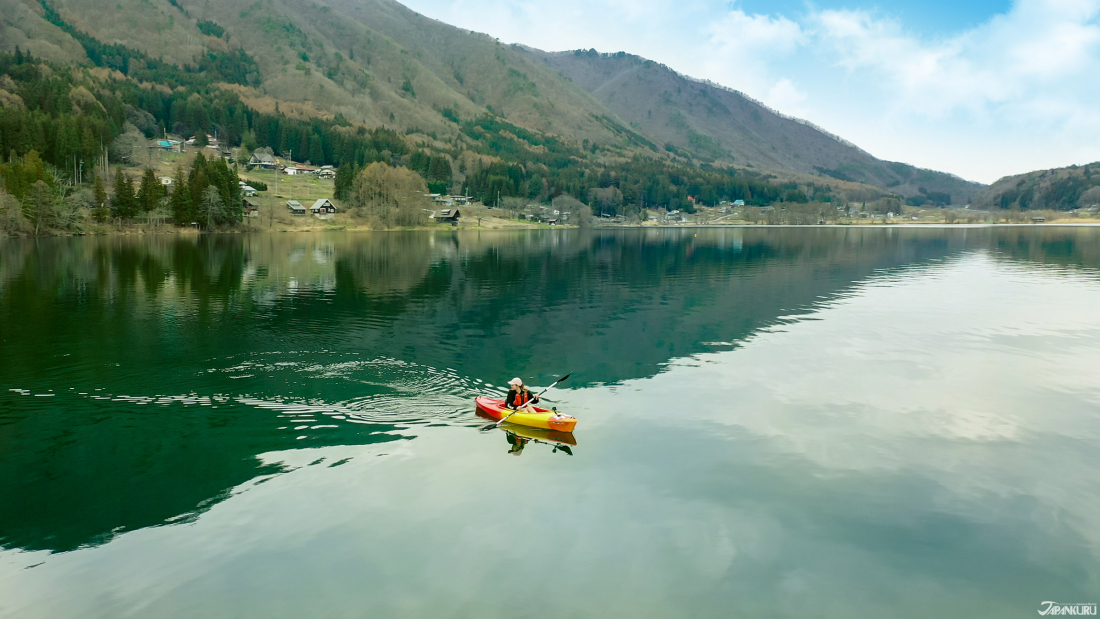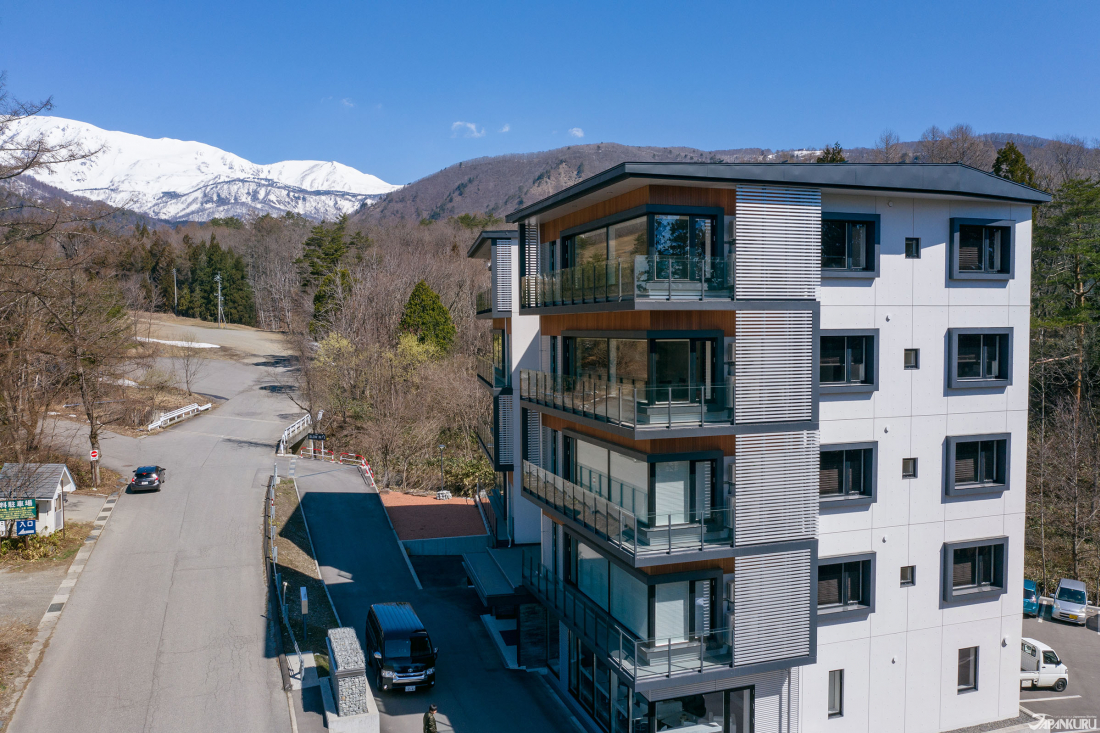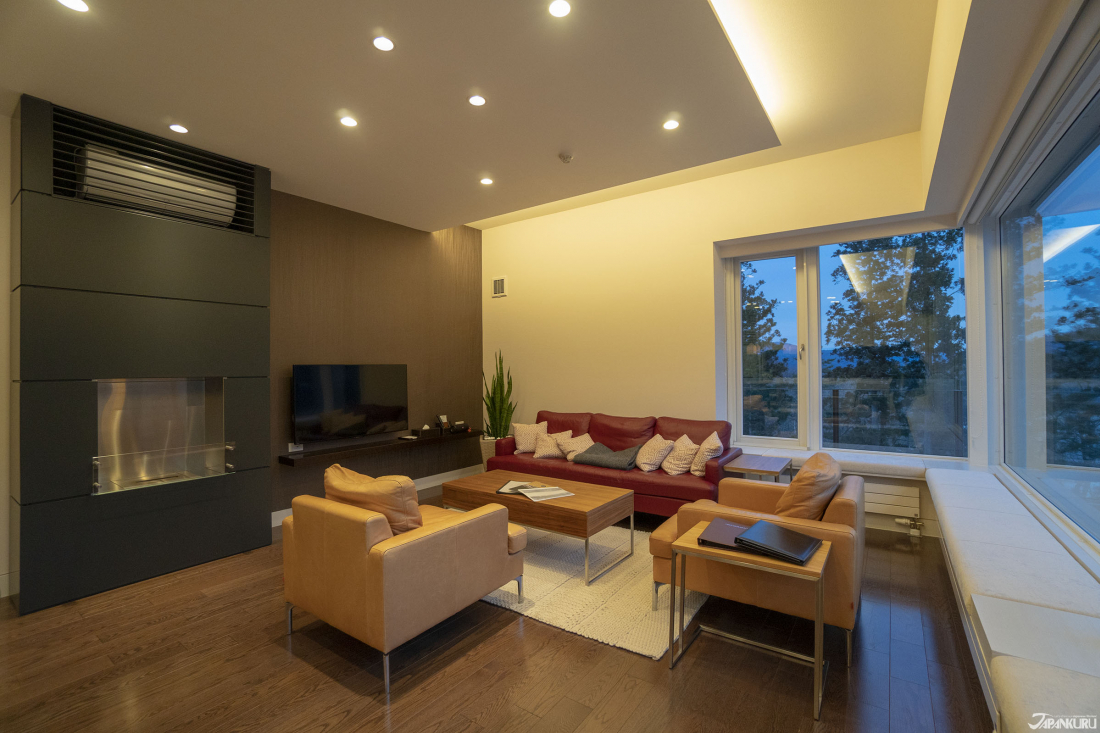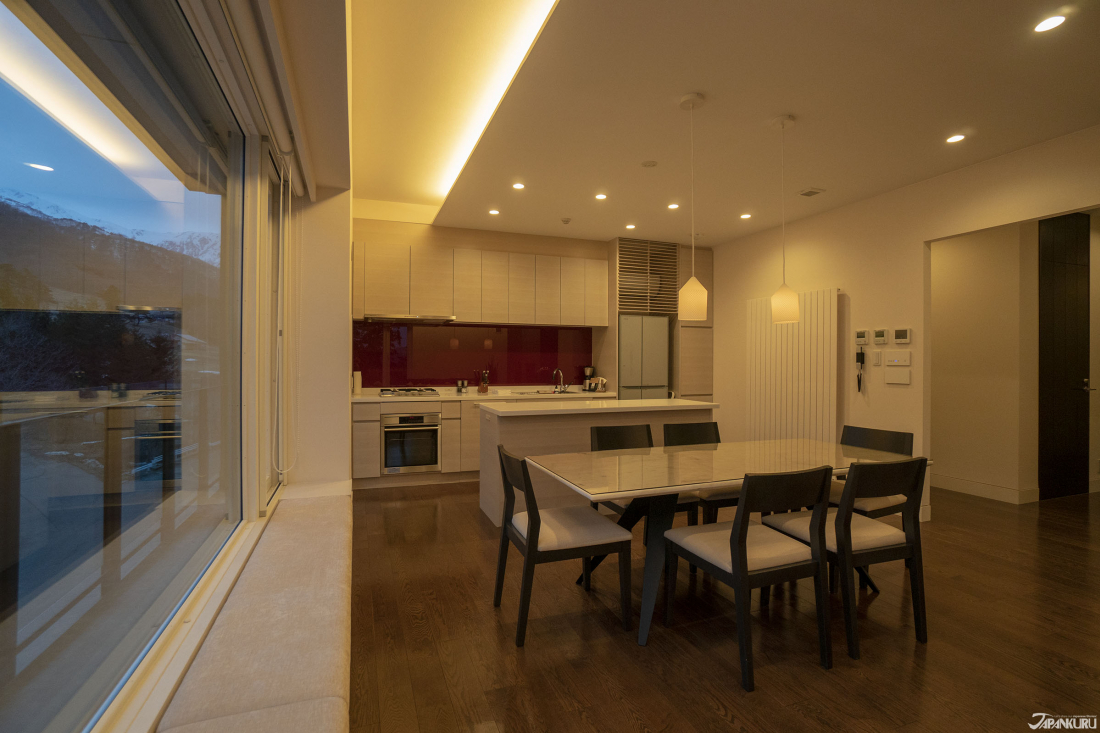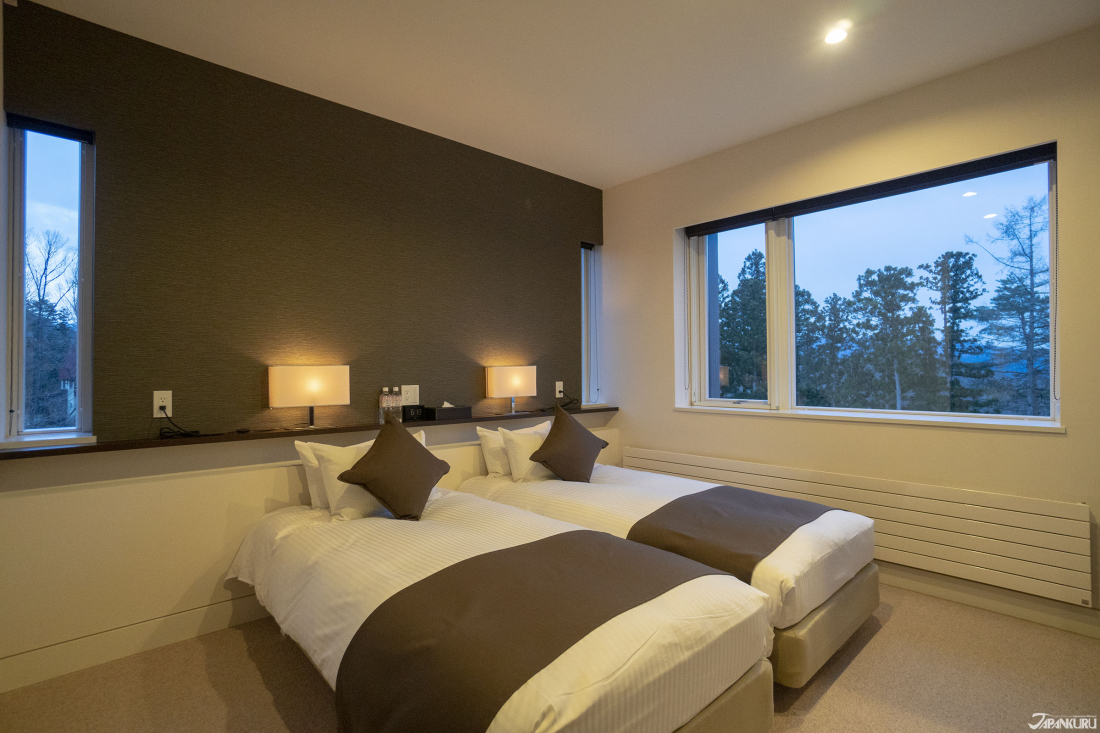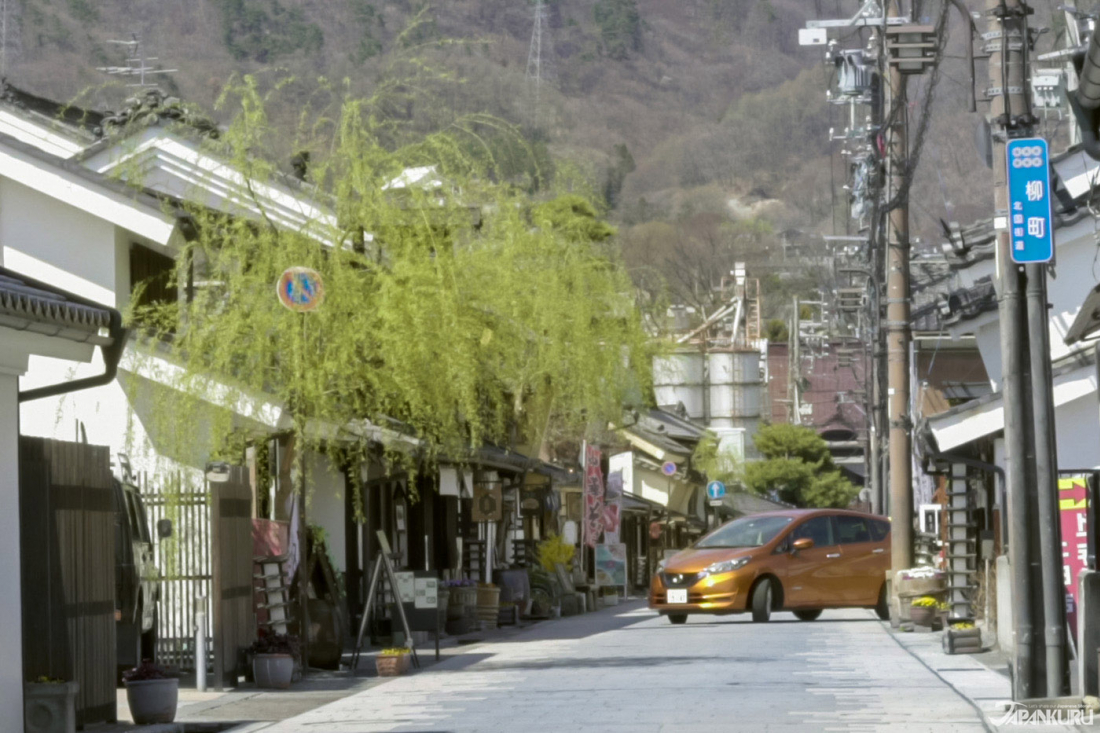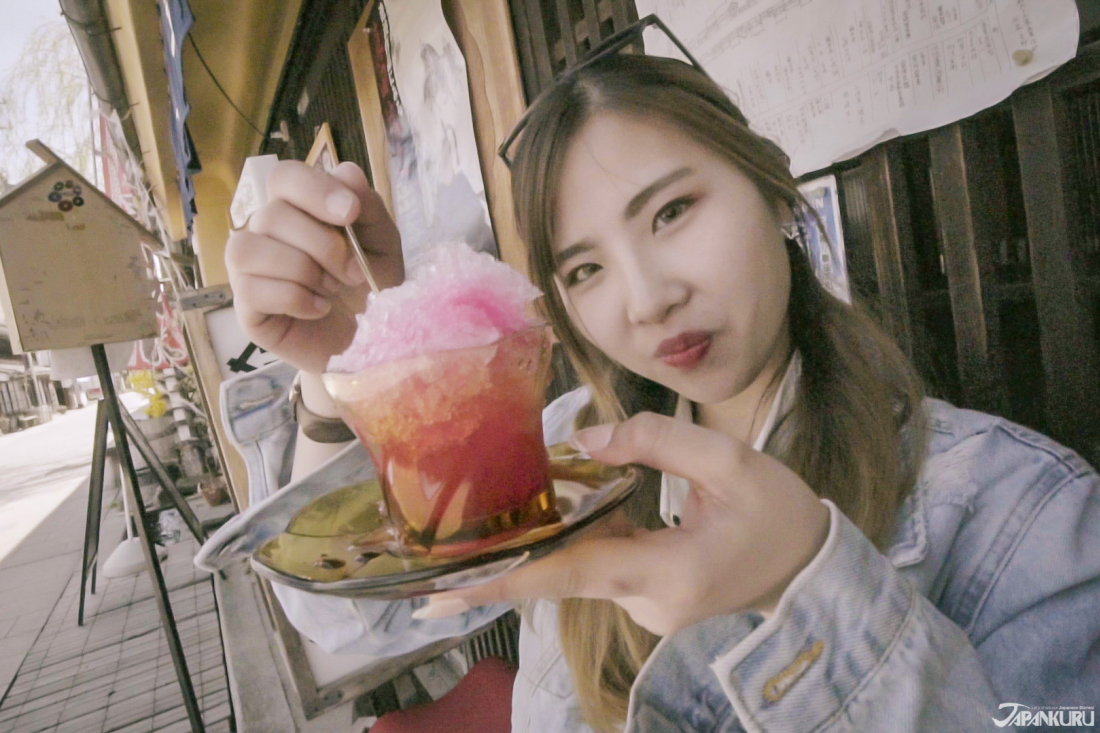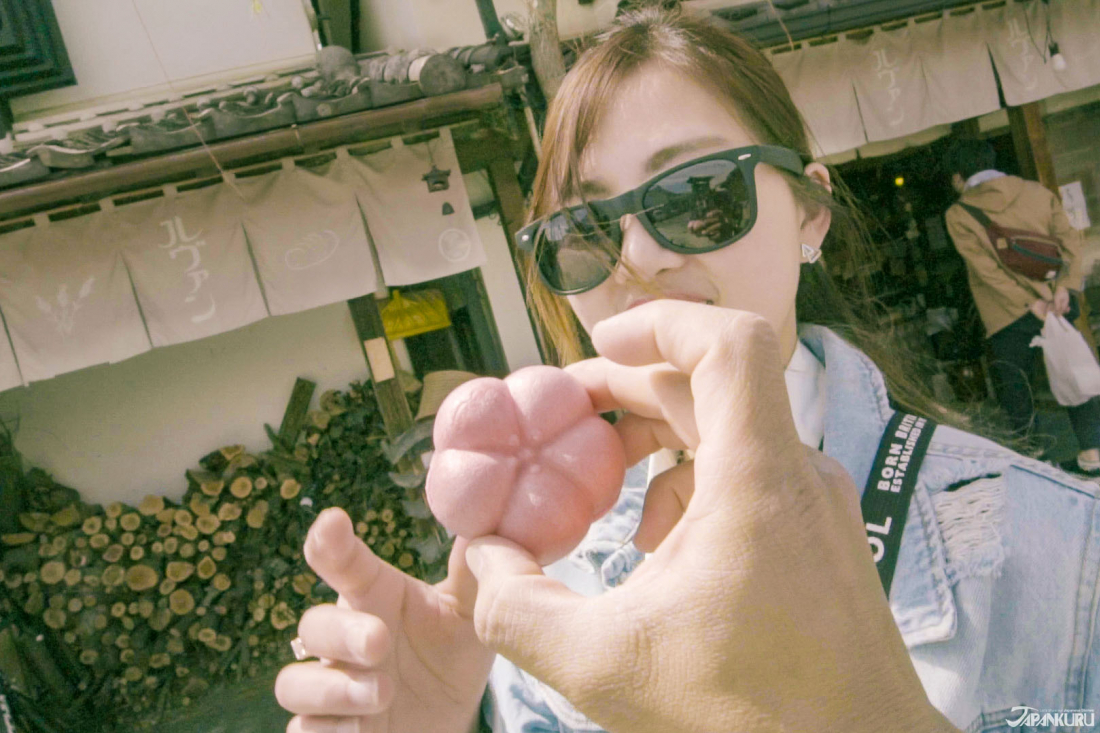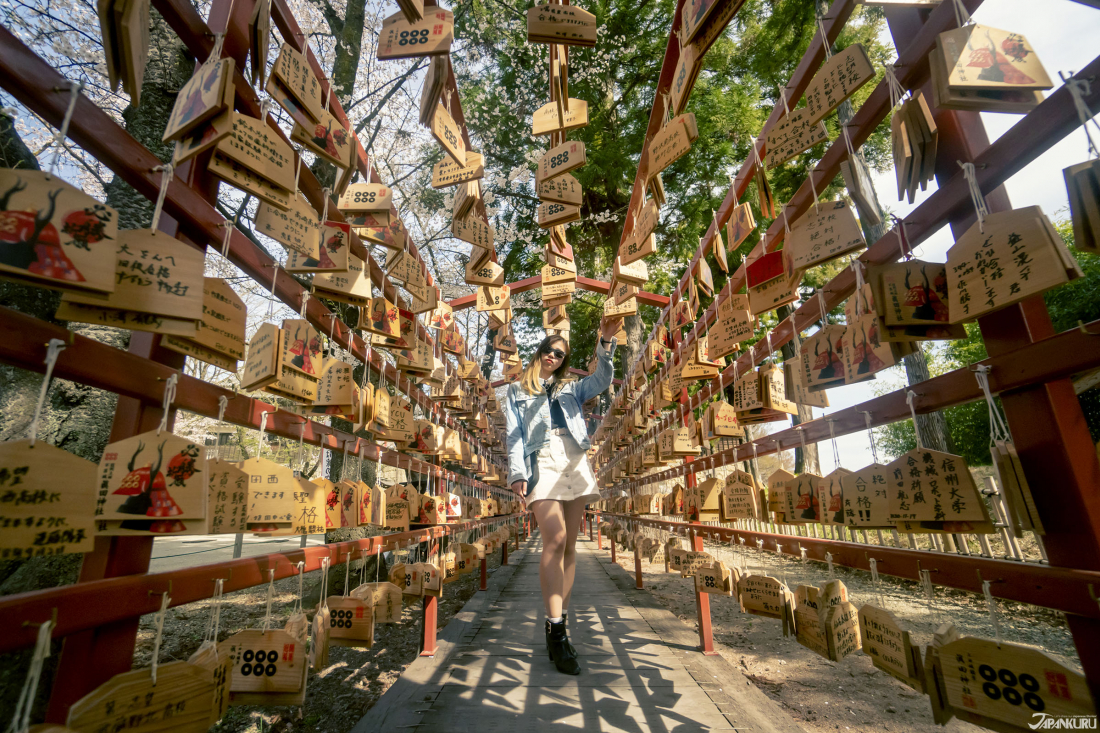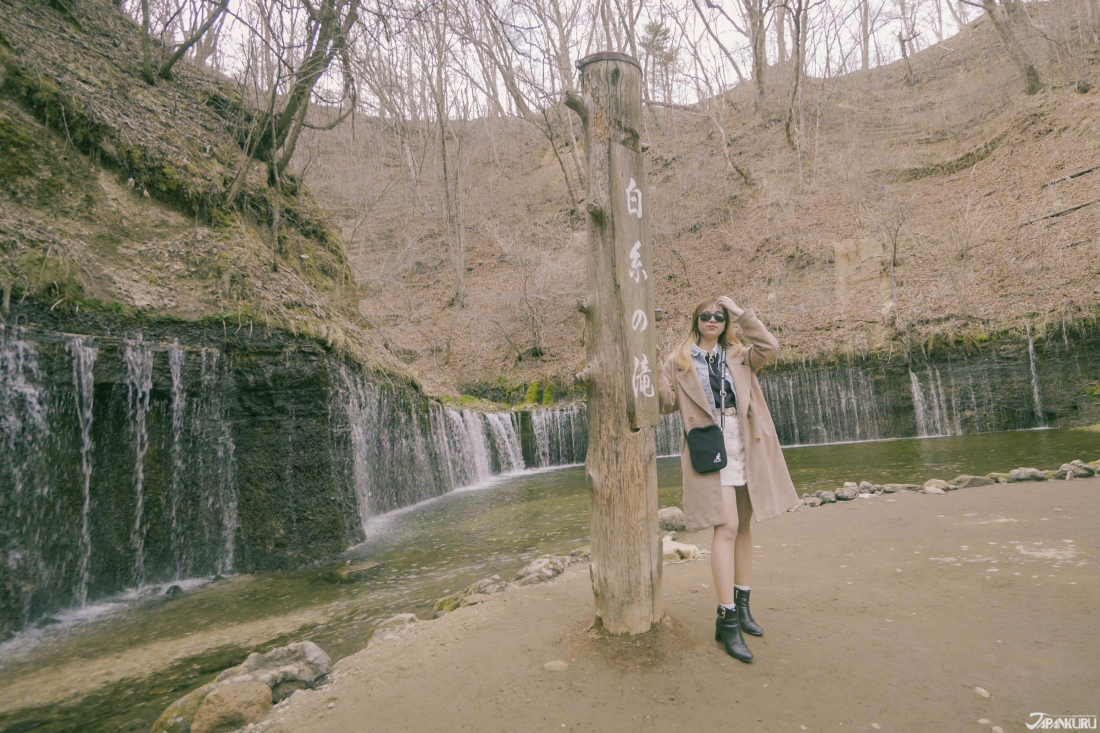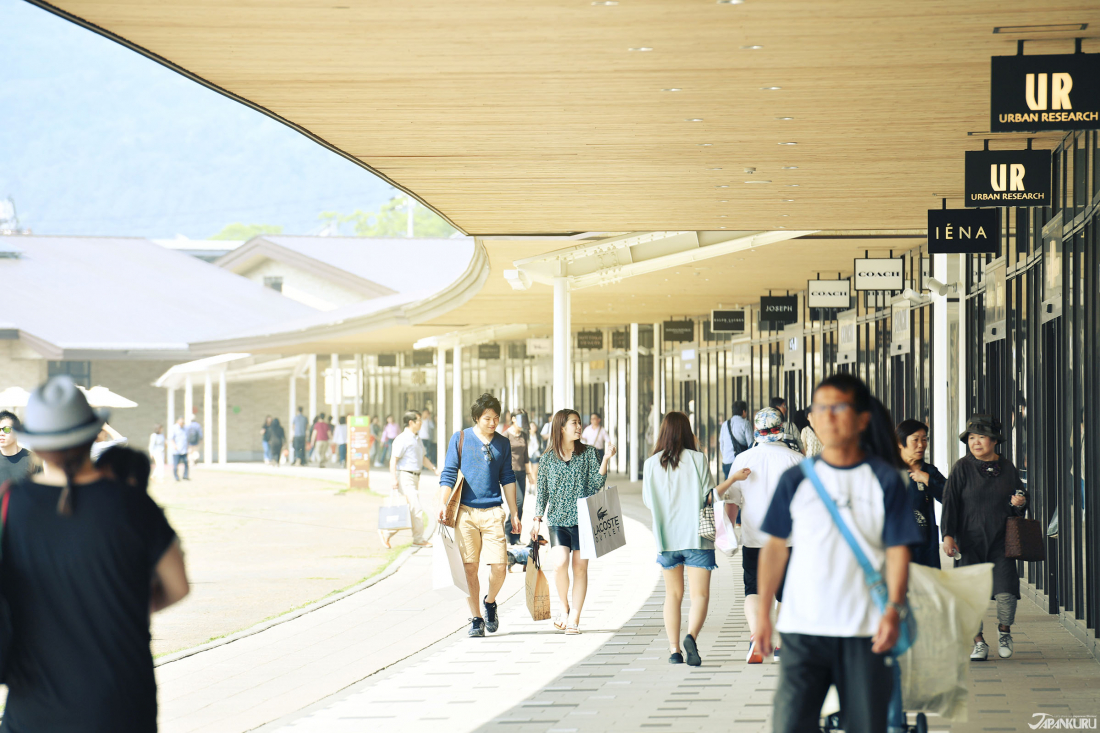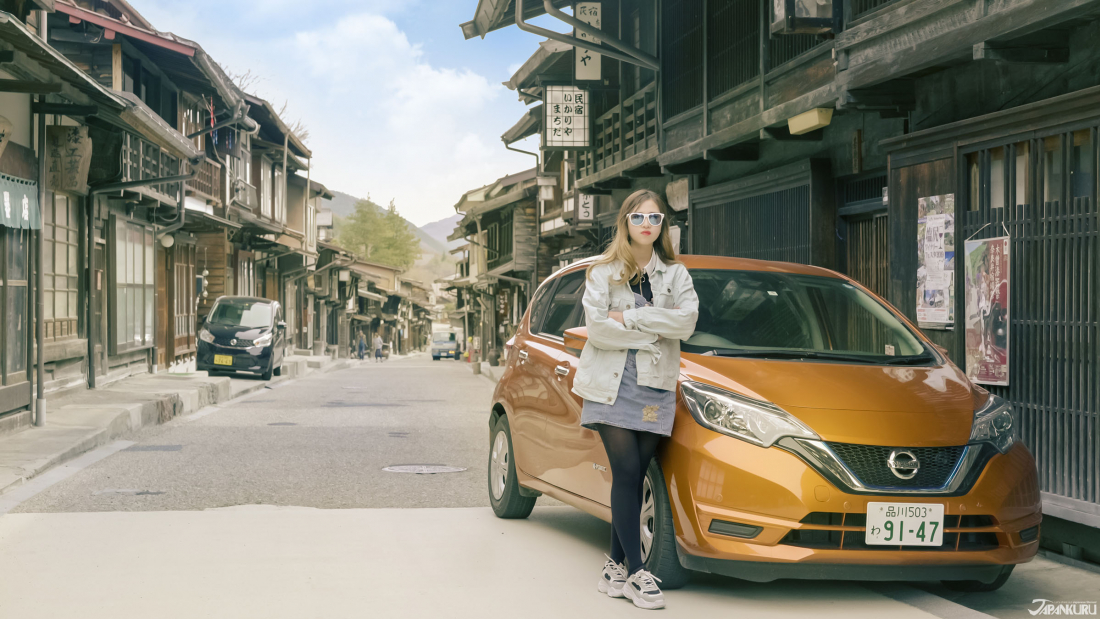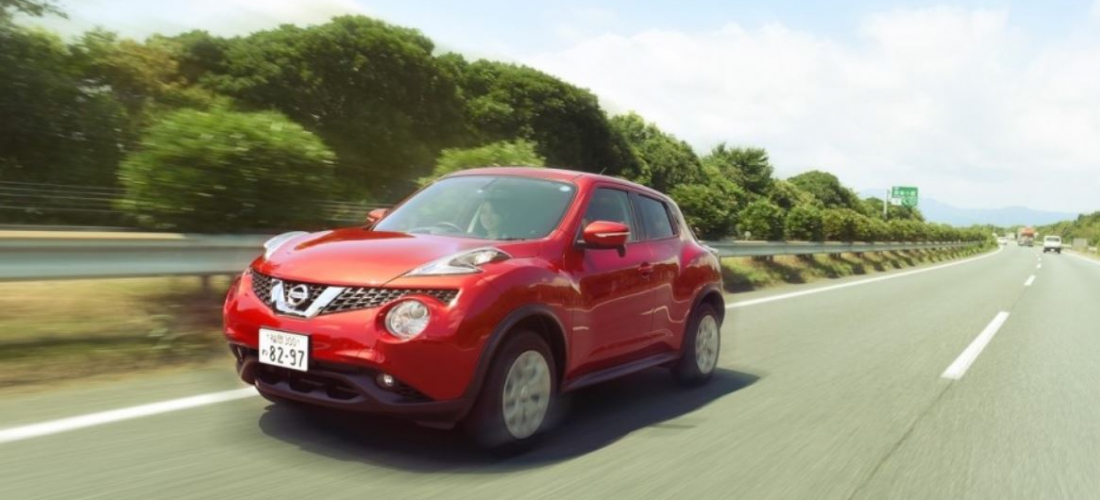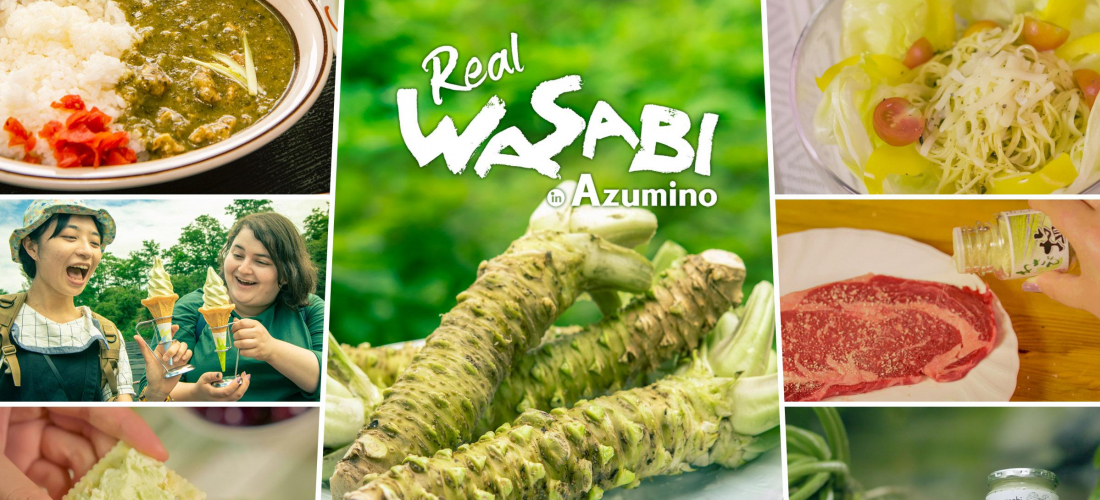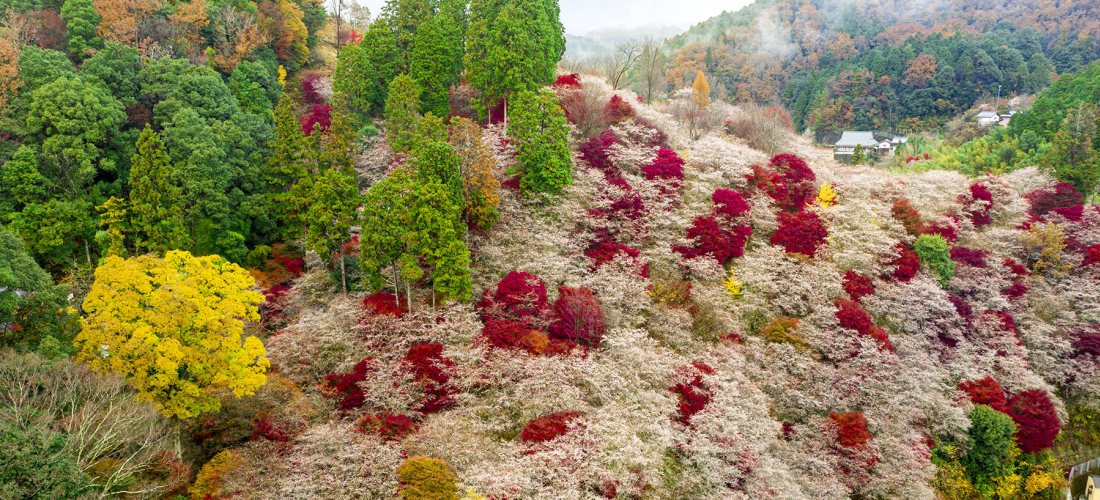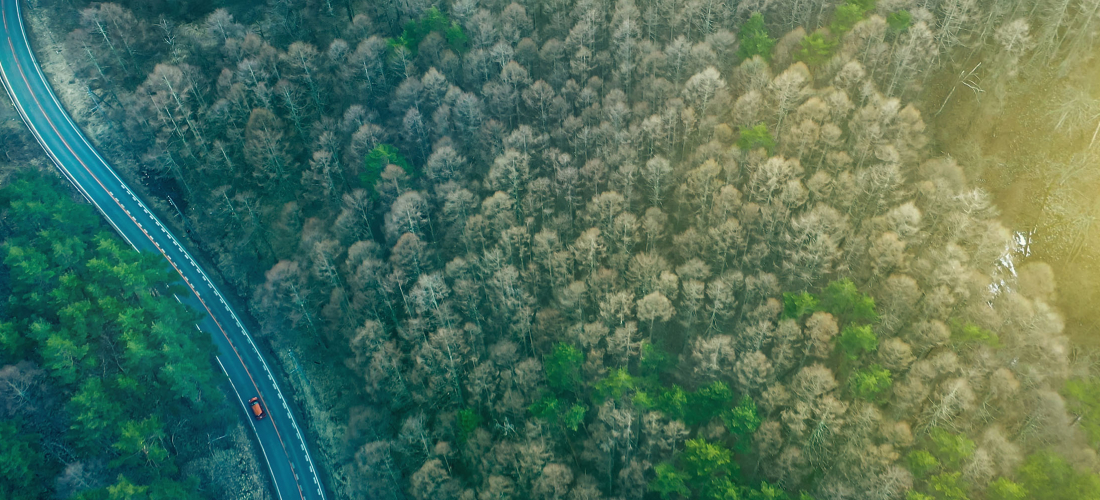
CONTENTS
This time, JAPANKURU hopped in a Nissan rent-a-car in Tokyo, and headed east towards Nagano.
On the way we saw the blush of sakura cherry blossoms, the blue of the warming sky, the snowy white of Mt. Fuji's peak, and the green of the lakes and mountains along the road.
Our trip was painted with all the colors of Japan's spring palette!
Iron Out the Rent-a-Car Details Before You Leave
Nissan Rent-a-Car Tokyo Station Yaesuguchi Branch
Traveling to Nagano in a Nissan Rent-a-Car!
Since we were starting from Tokyo, this time JAPANKURU used the Nissan Rent-a-Car Tokyo Station Yaesuguchi Branch. It's just a 3 to 5 minute walk south of Tokyo Station's Yaesu Exit, making it an easy trip over. It's definitely a convenient location if you're dragging around luggage. Even if you're starting your road trip in another part of Japan, though, Nissan's website lists clear information about what services are offered at each Nissan Rent-a-Car branch. On the Tokyo Station Yaesuguchi Branch's page, you'll see that it has ETC card rental available.
Tokyo Station Yaesuguchi Branch
Address: 2-5-4 Yaesu, Chuo-ku, Tokyo
Hours: 24/7
Phone: 03-3274-4501
Branch Info
Online Reservations
◆ Before you start planning your trip, remember: in Japan, cars drive on the left side of the road. (Learn more about why!) If you're from a country that drives on the right side, it's not too hard to get used to the switch, but it's a good idea to keep it in mind before you get on the road. Once you're confident in your left-side-of-the-road driving skills and you've determined your itinerary, confirm the following information and have all your documents ready before going to rent your car!
◆ For reservations:
□ Ready your passport.
□ Obtain an international driver's license. (More details on international permits for Americans, and some information from Nissan.)
□ Learn about what ETC (electronic toll collection) cards are for, and how to use them with Nissan Rent-a-Car.
□ Check in at the rental counter, and confirm your vehicle rental!
◆ Renting a car on site:
□ Find the perfect rental in their garage.
□ Pay with cash or credit card.
Starting Our Nissan Nagano Road Trip: The Fuji Shiba-sakura Festival
On our way to Nagano Prefecture, we stopped in for a lap of the Fuji Shiba-sakura Festival in Yamanashi!
If you've been in Japan in the spring, it can be hard to avoid the lovely views of cherry trees bursting into bloom and then shedding their petals on passers-by. These cherry blossoms are called sakura (桜) in Japanese, but the word sakura is used to refer to another kind of flower, too! The "shiba-sakura" is usually called moss phlox in English, and it's a little less common in Japan than its much taller cousin. The pink flowers are just as impressive, though, and they carpet the ground just like cherry blossoms spread overhead.
The Fuji Shiba-sakura Festival is the largest shiba-sakura festival in the Kanto Region, and it's about 2 hours from Tokyo by car. Nearly 800,000 of the flowers take over the expansive garden, while Mt. Fuji towers right next door. The panoramic view is like a painting, with Mt. Fuji taking up most of the background, and flowers covering the foreground.
During the festival you can sit down at Sakura Cafe Fujiyama Sweets and admire the spectacular settings from the seating area. Try some special limited-time-only specialty cherry blossom and local fruit-themed desserts.
This ice cream treat is one of the specialty desserts only available at the 2019 Fuji Shiba-sakura Festival, with cute sakura decoration and gelato made with local grapes!
(Yamanashi Grape Gelato Sundae – 650 yen)
From the cafe you can take a snapshot of you, the shiba-sakura, and Mt. Fuji all together. It's worth stopping in.
In addition to wandering the shiba-sakura grounds and enjoying gourmet sweets, there's plenty else to do at the festival. If you want to admire the flowers from a new perspective, take a hot air balloon ride and view them from the air! Or relax and soak your feet in a foot bath while you look on at the flowers. If you're used to Yoshina sakura, Japan's most common cherry blossom variety, these new sakura will be a treat!
mo
The Fuji Shiba-sakura Festival 2019 (Annual Event)
Event Dates: April 13 ~ May 26
Address: 212 Motusu, Fujikawaguchiko, Minamitsuru Yamanashi
Admission Fee: Adults 600 yen/Children 250 yen
Official Website (en)
Driving Info
Parking: 2 lots available
Fee: compact vehicles 500 yen/larger vehicles 2,000 yen/motorbikes 300 yen
More in Yamanashi Prefecture
Did we get lost and find ourselves in the Alps? Wait, no, this pastoral wonderland is still Yamanashi!
Seisenryo is a natural retreat and resort area in Yamanashi Prefecture with hotels, restaurants… and farms! The surrounding scenery certainly makes for a relaxing spot, with breathtaking mountains around the compound and a view of Mt. Fuji in the distance.
Seisenryo was originally constructed as a Christian youth retreat center in 1938, but was rebuilt in 1957 with the current business model, open to the public. The retreat now specializes in delicious food made with fresh seasonal ingredients, many of which are purchased from the local farms. It's especially famous for the soft-serve ice cream made with milk from Jersey cows living in nearby ranches. Get a taste of this fresh and deliciously milky ice cream for 400 yen.
Seisenryo Hamburger – 480 yen
Seisenryo Souvenirs
You can get the famous soft serve at the Seisenryo Jersey Hut. Within the hut is the Seisenryo Baker's Workshop, which sells freshly-baked bread, burgers, produce, and souvenirs. You can spend some time outside the shop on their 300 square meter (3230 sq ft) wooden deck, and savor the burgers and ice cream while you gaze at the mountain view.
Seisenryo
Address: 3545 Takanecho Kiyosato, Hokuto, Yamanashi
Jersey Hut Hours: 9:00 ~ 17:00
Seisenryo Official Website / Jersey Hut Official Website
Driving Info
Parking: 200 spots available
Fee: free!
The mountains that stretch between Nagano and Yamanashi Prefectures are called the Yatsugatake range. It's a popular area among mountain climbers in Japan, but this time we just admired their beauty from afar.
Our Next Destination: Takato Castle Site Park (高遠城址公園)
According to legend, these are the first sakura cherry blossoms in the world.
After seeing the moss phlox shiba-sakura of Yamanashi, we hope you've gotten a taste for less orthodox sakura viewing. This time, we're taking you to Takato Castle Site Park to enjoy night time sakura viewing.
This park is said to be one of the top three cherry blossom viewing spots in Japan each spring, and it holds an annual Takato Sakura Festival. Luckily, you can enter the park and enjoy the beautiful sakura during daylight hours, and also after sunset! A night visit gives you the perfect opportunity to see the beautifully lit blossoms reflected in the water under the bridge, a big contrast in comparison to the bright sun that shines onto the grounds during the day. Of course, if you end up at the Takato Castle Site Park during the winter, you won't be disappointed then, either. Snow blankets the park's maple trees and Japanese-style buildings, giving everything lots of winter charm.
Takato Castle Site Park
Address: Higashi Takato, Takatomachi, Ina, Nagano
Hours: 8:00 ~ 21:00
Admission Fee: Sakura Viewing Period – Adults 500 yen/Children 200 yen
(Free entrance at other times of year.)
Official Website / Takato Sakura Festival Website
Driving Info
Parking: available
Fee: compact vehicles 700 yen
Naraijuku
We wended our way through the roads once traversed by feudal lords of Japan, traveling between Tokyo and Kyoto.
The lantern in front of this hotel guides guests in the right direction.
During Japan's Edo Period, the "Five Routes" were the main arteries of the country. These five paths connected the capital, Edo (or modern-day Tokyo), to the rest of the country. These roads functioned not only as gateways for travelers, but also as the lifeblood of Japan's economy, with merchants taking advantage of the established routes. One of these routes was the Nakasendo (中山道 – literally central mountain route), which was commonly traveled by those going between the Tokyo area and Kyoto, Japan's ancient capital. Sometimes called the "Samurai Street", the ancient warriors supposedly walked the 550 km (340 mile) way in two weeks. Of course, since this was no quick trip, many towns sprouted up along the Five Routes as rest stops for travelers, usually called "stations" in English, or "shukuba" (宿場) in Japanese.
There are 69 stations along the Nakasendo Route, and one of the largest and most successful of these station towns was Naraijuku in Nagano. (The "juku" in Naraijuku (奈良井宿) and the "shuku" in "shukuba" (宿場) are actually the same Japanese word, meaning a place to stay! Just hearing the name can tell you about the town's origins.)
Farm-to-table local ingredients.
Simple, traditional, and comfortable rooms.
Fragrant freshwater fish cuisine.
With so many visitors arriving since the Edo Era, the town has sometimes been called "Narai of 1,000 buildings" (Narai senken, or 奈良井千軒), and some of those old Edo buildings are still around! Naraijuku still bustles with same rest station spirit, and there are many hotels, restaurants, and small shops around town. If you really love the look of old Japanese buildings, with beautiful wood facades and carefully tiled roofs, this chunk of the Nakasendo path will make your heart sing.
We decided to stay in the Naraijuku guest house Ikariya Machida, which took us back in time with rooms that smelled pleasantly of the wooden floors, and with home-made traditional Japanese cuisine prepared by the facility's owner. After a night there, we could imagine how a similar stay might have erased the fatigue of Edo travelers, leaving them refreshed and ready for the rest of their trip along the Nakasendo.
Ikariya Machida Inn (いかりや町田民宿)
Address: 573-1 Narai, Shiojiri, Nagano
Official Website
Driving our Nissan rent-a-car through the Naraijuku main drag, it almost felt like we might be in a certain delorean instead…
You can also try out some traditional Naraijuku crafts.
Bring home some souvenirs packed with Edo style. (Or make them yourself! How cool is this literal grass grasshopper!)
Stay in the Neighborhood: Matsuyasabo Coffee Shop
As a rest stop, aside from traditional Japanese inns, of course Naraijuku has a (very) old-fashioned coffee shop! I mean, can you imagine going on a two-week trip without stopping even once for coffee? Matsuyasabo still keeps travelers going today, and it's the only coffee we drank on our road trip! The coffee shop is in an old two-story house built towards the end of the Edo Period. The first floor is a little more modern, and is set up as a western-style cafe, but the second floor has a Japanese-style room with tatami flooring, so you can plop down and enjoy your coffee or tea.
Matsuyasabo Coffee Shop
Address: 583 Narai, Shiojiri, Nagano
Hours: 9:00 ~ 17:00
Official Website
Both the coffee and the facade have flavor~
Matcha Roll Cake – 450 yen
Make a new friend while you're there!
Naraijuku
Address: Narai, Shiojiri, Nagano
Official Website
Driving Info
Parking: available around the area.
Fee: both free and paid, see the official website for details.
Daio Wasabi Farm
Did you know that most of the wasabi eaten outside of Japan… isn't really wasabi? Your local sushi joint might do a reasonable job approximating the sinus-clearing flavor, but this farm has the real thing, and a lot of it!
Daio Wasabi Farm was established in 1917, giving it a history of more than 100 years. Covering an area of 15 hectares (more than 1.5 million square ft), it's the largest wasabi farm in Japan. Wasabi is rare outside of Japan because it's notoriously difficult to grow, but Daio Wasabi Farm clearly has the process down pat!
The farm is a wasabi wonderland, and lovers of the green stuff will rejoice in the 150 metric tons harvested annually. Aside from being a functional farm, Daio Wasabi Farm also provides wasabi snacks of all kinds, and of course wasabi souvenirs. Have you ever imagined wasabi as anything other than a tool for adding a little kick to your sushi? The on-site restaurant will open your mind and your sinuses to the many ways it can be eaten and thoroughly enjoyed.
If you're a fan of famous director Akira Kurosawa, don't miss this chance to visit the setting for the final segment of his 1990 film Dreams.
Wasabi-Don Rice Bowl (本わさび丼) – 980 yen
(Not including the wasabi juice in the upper right.)
Before digging in, you grind your own wasabi! It doesn't get any fresher than this.
Wasabi Juice (わさびジュース) – 310 yen
Daio Wasabi Farm
Address: 3640, Hotaka, Azumino, Nagano
Hours: 9:00 ~ 17:20 (Mar ~ Oct)/9:00 ~ 16:30 (Nov ~ Feb)
Admission: Free!
Official Website
Driving Info
Parking: 350 spots available
Fee: free!
The Hakuba Area
After our trip to the Daio Wasabi Farm, we took our Nissan Rent-a-Car into the Hakuba area of Nagano. Hakuba is known as a ski resort area, but even in the spring and summer the mountains are beautifully snow-capped.
When the snow starts piling up in the winter, these mountains turn into world-class ski runs. The great snow quality in Hakuba makes it popular not just with locals, but with skiers from around the country and the globe.
While we were in the area, though, we got to see everything coming to life in the midst of springtime! With glorious cherry blossoms bursting into bloom at the foot of these majestic mountains, it's another unusual but beautiful view of Japan's sakura!
Lake Kizaki
This popular resort lake is one of the "Nishina Three Lakes".
Close to Hakuba, the surrounding mountains reflect on the lake water, making the glassy surface look like an impressionist painting. When the weather gets nice in the spring and summer, it's a popular destination for visitors who want to spend time camping, hiking, or hanging out in and around the water. Take a kayak out into the middle of the peaceful lake, and then just lay back and relax.
Kizakiko Pow Wow Campsite & Outdoor Club
Address: 19004-1 Taira, Omachi, Nagano
Fee: See the website for prices.
Official Website
Driving Info
Parking: available
Fee: free!
Obinata no Yu Hot Spring
Is it truly a trip through Japan's countryside without a stop at a hot spring bath?
With Hakuba being a popular winter tourist destination, luxurious hot springs (or onsen in Japanese, 温泉) are a must! This one, called Obinata no Yu, flows right from a natural source, and includes an open-air bath surrounded by the mountainous scenery. It's beautiful year-round, but in winter the snow piles up outside while the hot water keeps you warm and cozy. We had to take a break here before hitting the road again!
Obinata no Yu
Address: 9346-1 Hokujo, Hakuba-mura, Kitaazumi, Nagano
Fee: Adults 600 yen/Children 300 yen (Bring toiletries and towels, or rent them for an extra fee.)
Hours: 9:00 ~ 18:00 (summer)/19:00 ~ 17:00 (winter)
Website
Driving Info
Parking: 20 spots available
Fee: free!
Mountain Side Hakuba
While in Hakuba, we stayed in an apartment-style hotel right up against one of the many mountains.
Hakuba doesn't offer quite the same "step outside and you're there" convenience as a big city, so it's a great place to choose a hotel with apartment-style suites. We chose to visit Mountain Side Hakuba, a fresh new hotel that finished construction in just January 2017. Each of the suites comes with a complete living room and kitchen, along with bedrooms and baths. We got to take a trip to the supermarket together, cook up dinner, and have ourselves a dinner party. Why not give it a try with your friends and family next time you're in Hakuba?
Mountain Side Hakuba
Address: 4313-1 Hokujo Hakuba, Kita Azumi-gun, Nagano
Official Website/Reservation Page
Driving Info
Parking: available
Fee: free!
Ueda
Thanks to NHK historical drama Sanada Maru, the city of Ueda was brought back to the time of warriors, and to the forefront of Japanese minds.
The Hokkoku Kaido Highway’s Historic Yanagimachi Street
We already stopped in at Naraijuku, a historic remnant of the Edo Period's Five Routes, so we thought we'd take a look at what some of the other main roads of Japan's past were like. Slightly less enormous in its importance, but still widely traveled, was the Hokkoku Kaido highway running the width of Japan.
While travelers utilizing the Nakasendo, and the other Five Routes, were strictly inspected, the Hokkoku Kaido road was available for much freer use. Because of this, the road was crowded with the average citizens of Edo Japan, relied upon by many for everyday uses. Of course, this was no short path, and towns popped up along the Hokkoku Kaido to provide travelers with rest and refreshment, just like the more major roads. One of these rest stations with bits of the old town remaining is Yanagimachi in Ueda City, where many of the old shops and inns are still functioning buildings. Walk down the street these days and you'll find shops selling traditional snacks, souvenirs, and restaurants filling the air with the savory and sweets smells of the Edo Era.
Ohnishi Soba
This hand-made soba is made with germinated buckwheat berries, and the shop closes for the day once the noodles run out. (The place is popular and this happens pretty quick, so don't get there too late!)
Address: 4-9-8 Chuo, Ueda, Nagano
Hours: 11:00 ~ 14:00
Official Website
Yanagimachiya
Yanagimachiya offers some very nice Japanese shaved ice, or "kakigoori" (かき氷)!
Address: 4-7-30 Chuo, Ueda, Nagano
Hours: 10:00 ~ 16:00 (closed Wednesdays)
Official Website
Yanagimachiya
They also sell this little "monaka" (最中), or Japanese wafer cake. This one is shaped like a lovely blossom and filled with apple, one of the shop's specialties.
Address: 4-7-30 Chuo, Ueda, Nagano
Hours: 10:00 ~ 16:00 (closed Wednesdays)
Official Website
Ueda Castle Park
A site good for history buffs and sakura lovers!
Ten to fifteen minutes walk from Yanagimachi's historic street is the Ueda Castle Park. This castle was originally built by the area's Sanada clan, which is indeed the same Sanada as in the popular NHK drama made in the area. The castle and the Sanada clan managed the impressive feat of forcing Tokugawa's army to retreat, not just once, but twice keeping a much larger and more powerful military at bay. Nowadays, the remnants of that powerful keep are just barely hanging on, but the park is still a rejuvenating visit. On the grounds is the Sanada Shrine (真田神社), a popular destination for students praying they pass their exams. And during the spring, blooming cherry blossoms cascade down the banks of the moat and around the park.
Ueda Castle & Cherry Blossoms
Stalls Selling Snacks for Sakura Viewers
"Please help me pass my finals!"
If you want to learn more about local history, check here for events on the theme. Watch history come to life in these entertaining performances.
Ueda Castle Park
Address: 2 Ninomaru, Ueda, Nagano
Fee: Adults 300 yen/High School Students 200 yen/Elementary School Students 100 yen
Official Website
Driving Info
Parking: available at the Ueda Castle Station lot and Ueda Castle Hokkoku Tourism lot
Fee: free for a limited period, details available here.
More to See
Thanks for coming along on our road trip to Nagano, everybody! These were our favorite stops on the way, but if you want to take a similar trip and you love packing days full to bursting with things to do, here are a couple more places you can check out.
Karuizawa Shiraito Falls
This unique waterfall is only 3 meters (10 ft) high, but the Shiraito Falls stretch 70 meters (230 ft) across! The water flows down the low cliff face in delicate silky rivulets like lace curtains, giving the falls their name, Shiraito (白糸), which literally means white thread.
Address: Kose Nagakura, Karuizawa, Kitasaku District, Nagano
Parking: 150 spots available
Karuizawa Prince Shopping Plaza
There's nothing wrong with a little retail therapy, and you've got a car trunk ready to pack with the fruits of your labor! This shopping center has lots of popular Japanese stores, along with international favorites.
(In fact, we liked Karuizawa and the shopping there so much, we wrote a whole article about just that!)
Address: Karuizawa, Kitasaku District, Nagano
Official Website
We've explored some of the breathtaking nature of Japan's Kyushu Island in the south.
We ate cow tongue and met the friendly foxes of Japan's northern region, Tohoku.
And we once went on three little trips around the country!
Or add us on Instagram and Facebook to share your pictures of Japan. 🗾
COMMENT
FEATURED MEDIA
VIEW MORE 
A New Tokyo Animal Destination: Relax & Learn About the World’s Animals in Japan
#pr #japankuru #anitouch #anitouchtokyodome #capybara #capybaracafe #animalcafe #tokyotrip #japantrip #카피바라 #애니터치 #아이와가볼만한곳 #도쿄여행 #가족여행 #東京旅遊 #東京親子景點 #日本動物互動體驗 #水豚泡澡 #東京巨蛋城 #เที่ยวญี่ปุ่น2025 #ที่เที่ยวครอบครัว #สวนสัตว์ในร่ม #TokyoDomeCity #anitouchtokyodome

Shohei Ohtani Collab Developed Products & Other Japanese Drugstore Recommendations From Kowa
#pr #japankuru
#kowa #syncronkowa #japanshopping #preworkout #postworkout #tokyoshopping #japantrip #일본쇼핑 #일본이온음료 #오타니 #오타니쇼헤이 #코와 #興和 #日本必買 #日本旅遊 #運動補充能量 #運動飲品 #ช้อปปิ้งญี่ปุ่น #เครื่องดื่มออกกำลังกาย #นักกีฬา #ผลิตภัณฑ์ญี่ปุ่น #อาหารเสริมญี่ปุ่น

도쿄 근교 당일치기 여행 추천! 작은 에도라 불리는 ‘가와고에’
세이부 ‘가와고에 패스(디지털)’ 하나면 편리하게 이동 + 가성비까지 완벽하게! 필름카메라 감성 가득한 레트로 거리 길거리 먹방부터 귀여움 끝판왕 핫플&포토 스폿까지 총집합!
Looking for day trips from Tokyo? Try Kawagoe, AKA Little Edo!
Use the SEIBU KAWAGOE PASS (Digital) for easy, affordable transportation!
Check out the historic streets of Kawagoe for some great street food and plenty of picturesque retro photo ops.
#pr #japankuru #도쿄근교여행 #가와고에 #가와고에패스 #세이부패스 #기모노체험 #가와고에여행 #도쿄여행코스 #도쿄근교당일치기 #세이부가와고에패스
#tokyotrip #kawagoe #tokyodaytrip #seibukawagoepass #kimono #japantrip

Hirakata Park, Osaka: Enjoy the Classic Japanese Theme Park Experience!
#pr #japankuru #hirakatapark #amusementpark #japantrip #osakatrip #familytrip #rollercoaster #retrôvibes #枚方公園 #大阪旅遊 #關西私房景點 #日本親子旅行 #日本遊樂園 #木造雲霄飛車 #히라카타파크 #สวนสนุกฮิราคาตะพาร์ค

🍵Love Matcha? Upgrade Your Matcha Experience With Tsujiri!
・160년 전통 일본 말차 브랜드 츠지리에서 말차 덕후들이 픽한 인기템만 골라봤어요
・抹茶控的天堂!甜點、餅乾、飲品一次滿足,連伴手禮都幫你列好清單了
・ส่องมัทฉะสุดฮิต พร้อมพาเที่ยวร้านดังในอุจิ เกียวโต
#pr #japankuru #matcha #matchalover #uji #kyoto #japantrip #ujimatcha #matchalatte #matchasweets #tsujiri #말차 #말차덕후 #츠지리 #교토여행 #말차라떼 #辻利抹茶 #抹茶控 #日本抹茶 #宇治 #宇治抹茶 #日本伴手禮 #抹茶拿鐵 #抹茶甜點 #มัทฉะ #ของฝากญี่ปุ่น #ชาเขียวญี่ปุ่น #ซึจิริ #เกียวโต

・What Is Nenaito? And How Does This Sleep Care Supplement Work?
・你的睡眠保健品——認識「睡眠茶氨酸錠」
・수면 케어 서플리먼트 ‘네나이토’란?
・ผลิตภัณฑ์เสริมอาหารดูแลการนอน “Nenaito(ネナイト)” คืออะไร?
#pr #japankuru #sleepcare #japanshopping #nenaito #sleepsupplement #asahi #睡眠茶氨酸錠 #睡眠保健 #朝日 #l茶胺酸 #日本藥妝 #日本必買 #일본쇼핑 #수면 #건강하자 #네나이토 #일본영양제 #อาหารเสริมญี่ปุ่น #ช้อปปิ้งญี่ปุ่น #ร้านขายยาญี่ปุ่น #ดูแลตัวเองก่อนนอน #อาซาฮิ

Japanese Drugstore Must-Buys! Essential Items from Hisamitsu® Pharmaceutical
#PR #japankuru #hisamitsu #salonpas #feitas #hisamitsupharmaceutical #japanshopping #tokyoshopping #traveltips #japanhaul #japantrip #japantravel

Whether you grew up with Dragon Ball or you just fell in love with Dragon Ball DAIMA, you'll like the newest JINS collab. Shop this limited-edition Dragon Ball accessory collection to find some of the best Dragon Ball merchandise in Japan!
>> Find out more at Japankuru.com! (link in bio)
#japankuru #dragonball #dragonballdaima #animecollab #japanshopping #jins #japaneseglasses #japantravel #animemerch #pr

This month, Japankuru teamed up with @official_korekoko to invite three influencers (originally from Thailand, China, and Taiwan) on a trip to Yokohama. Check out the article (in Chinese) on Japankuru.com for all of their travel tips and photography hints - and look forward to more cool collaborations coming soon!
【橫濱夜散策 x 教你怎麼拍出網美照 📸✨】
每次來日本玩,是不是都會先找旅日網紅的推薦清單?
這次,我們邀請擁有日本豐富旅遊經驗的🇹🇭泰國、🇨🇳中國、🇹🇼台灣網紅,帶你走進夜晚的橫濱!從玩樂路線到拍照技巧,教你怎麼拍出最美的夜景照。那些熟悉的景點,換個視角說不定會有新發現~快跟他們一起出發吧!
#japankuru #橫濱紅磚倉庫 #汽車道 #中華街 #yokohama #japankuru #橫濱紅磚倉庫 #汽車道 #中華街 #yokohama #yokohamaredbrickwarehouse #yokohamachinatown

If you’re a fan of Vivienne Westwood's Japanese designs, and you’re looking forward to shopping in Harajuku this summer, we’ve got important news for you. Vivienne Westwood RED LABEL Laforet Harajuku is now closed for renovations - but the grand reopening is scheduled for July!
>> Find out more at Japankuru.com! (link in bio)
#japankuru #viviennewestwood #harajuku #omotesando #viviennewestwoodredlabel #viviennewestwoodjapan #비비안웨스트우드 #오모테산도 #하라주쿠 #日本購物 #薇薇安魏斯伍德 #日本時尚 #原宿 #表參道 #japantrip #japanshopping #pr

Ready to see TeamLab in Kyoto!? At TeamLab Biovortex Kyoto, the collective is taking their acclaimed immersive art and bringing it to Japan's ancient capital. We can't wait to see it for ourselves this autumn!
>> Find out more at Japankuru.com! (link in bio)
#japankuru #teamlab #teamlabbiovortex #kyoto #kyototrip #japantravel #artnews
Photos courtesy of teamLab, Exhibition view of teamLab Biovortex Kyoto, 2025, Kyoto ® teamLab, courtesy Pace Gallery

Japanese Makeup Shopping • A Trip to Kamakura & Enoshima With Canmake’s Cool-Toned Summer Makeup
#pr #canmake #enoshima #enoden #에노시마 #캔메이크 #japanesemakeup #japanesecosmetics

⚔️The Robot Restaurant is gone, but the Samurai Restaurant is here to take its place. Check it out, and don't forget your coupon!
🍣신주쿠의 명소 로봇 레스토랑이 사무라이 레스토랑으로 부활! 절찬 쿠폰 발급중
💃18歲以上才能入場的歌舞秀,和你想的不一樣!拿好優惠券去看看~
#tokyo #shinjuku #samurairestaurant #robotrestaurant #tokyotrip #도쿄여행 #신주쿠 #사무라이레스토랑 #이색체험 #할인이벤트 #歌舞伎町 #東京景點 #武士餐廳 #日本表演 #日本文化體驗 #japankuru #japantrip #japantravel #japanlovers #japan_of_insta

Japanese appliance & electronics shopping with our KOJIMA x BicCamera coupon!
用JAPANKURU的KOJIMA x BicCamera優惠券買這些正好❤️
코지마 x 빅 카메라 쿠폰으로 일본 가전 제품 쇼핑하기
#pr #japankuru #japanshopping #kojima #biccamera #japaneseskincare #yaman #dji #osmopocket3 #skincaredevice #日本購物 #美容儀 #相機 #雅萌 #日本家電 #일본여행 #면세 #여행꿀팁 #일본쇼핑리스트 #쿠폰 #일본쇼핑 #일본브랜드 #할인 #코지마 #빅카메라 #japankurucoupon
MAP OF JAPAN
SEARCH BY REGION

LATEST
VIEW MOREEVENT CALENDAR
VIEW MORE
